#which was a beautiful dinosaur comic with no dialogue
Explore tagged Tumblr posts
Text




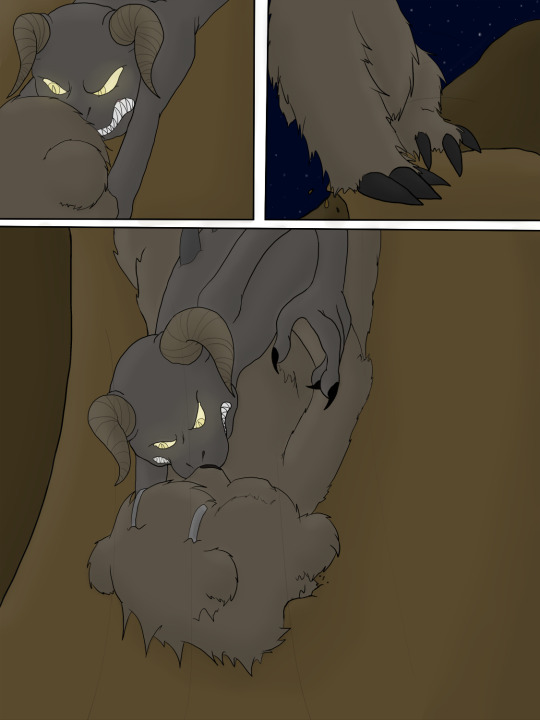


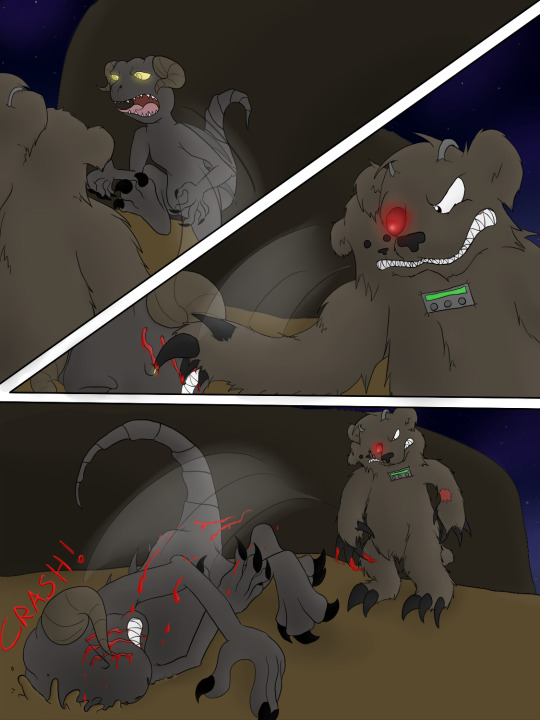

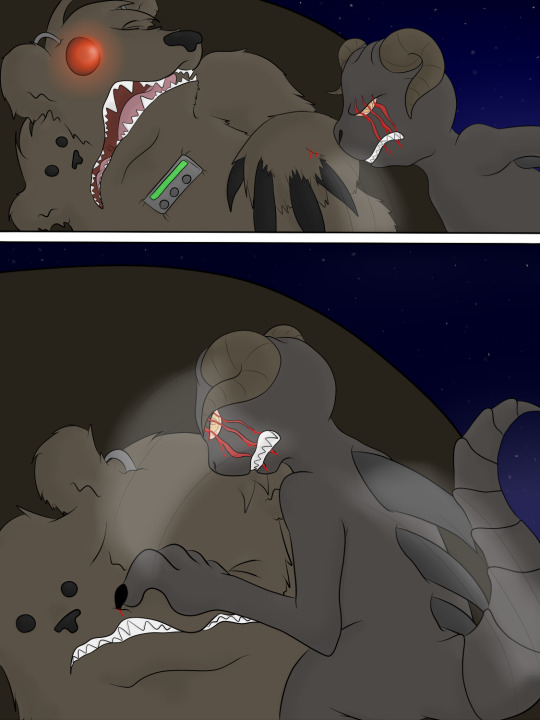


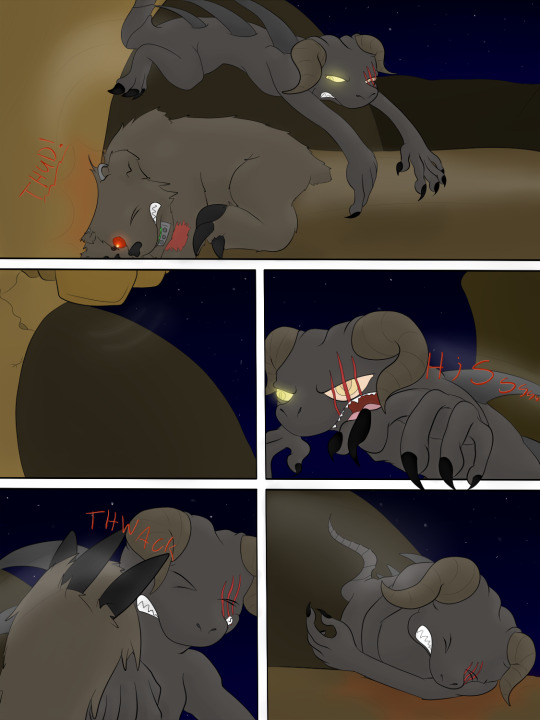

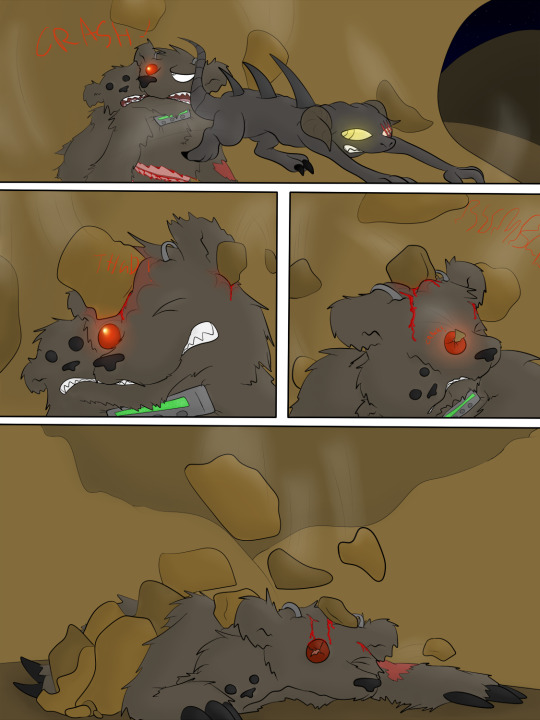





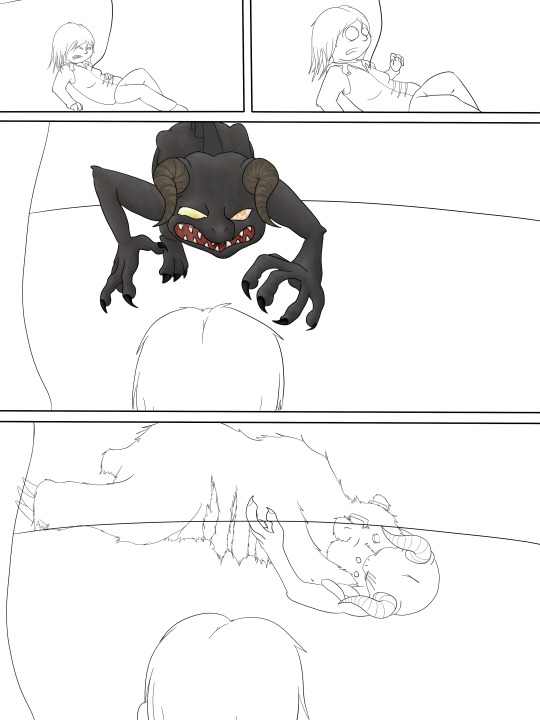



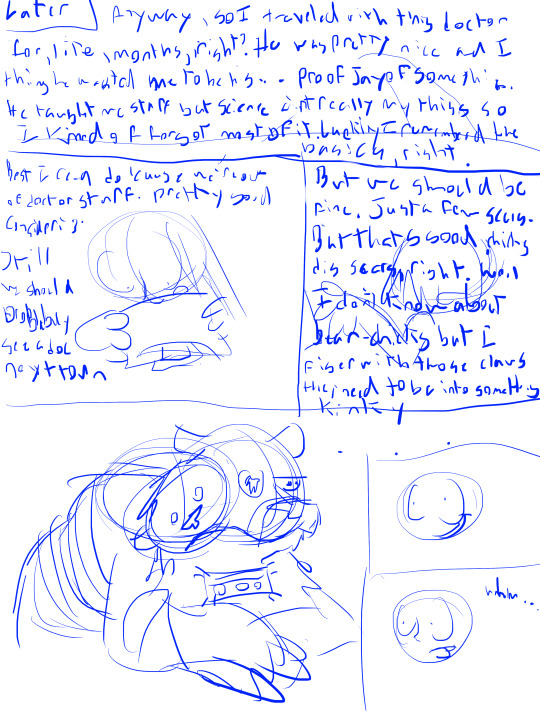
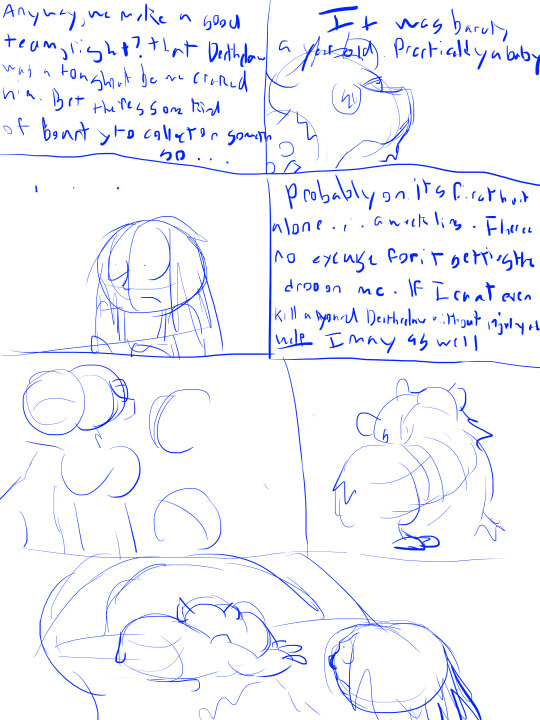
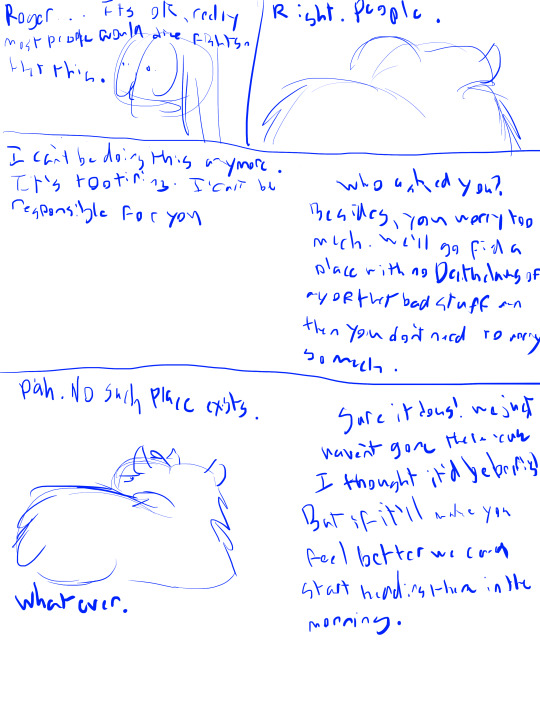


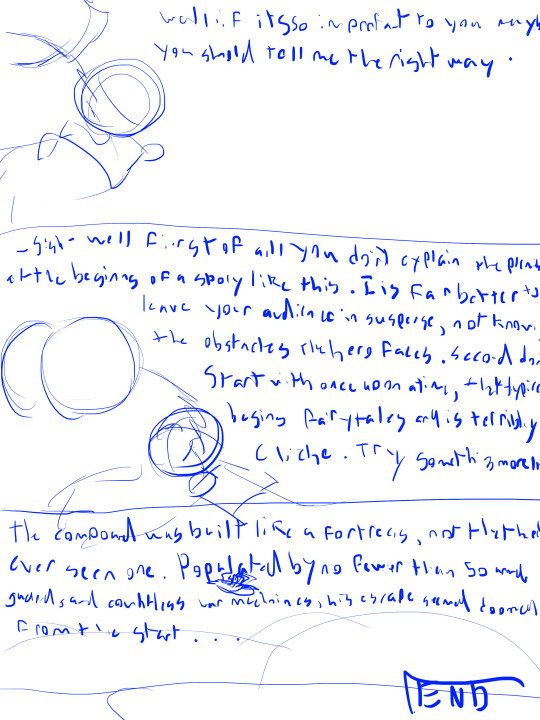
Since I was talking about Roger earlier I thought I'd share this old 30-page comic I drew back in 2011 where Roger fights a deathclaw. It meant to serve as a prologue to my Fallout story to explain why two wanderers like Magpie and Roger were looking to settle down in New Vegas. I only fully completed 20 pages but had all 30 outlined. I figured I'd share all of them, the completed and the roughs, just for fun. I'm honestly still pretty proud of it as I'd never drawn something so actiony before and I liked how it turned out. It's also a pretty good depiction of their personalities.
Since the last few pages are just my awful handwriting and thus illegible, I figured I'd transcribe them here (since miraculously I can read my handwriting lol)
Page 24
Roger: I told you to stay in the CAVE
Magpie: Yeah, well... if I did you'd be dead so-
Roger: IRRELEVANT
Magpie: Well, it is(n't) to me... and will you drop that? It's so gross
Roger: Come on, let's (didn't finish this sentence)
Magpie: Good idea
Page 25
LATER
Magpie: Anyway, so I raveled with this doctor for, like, months, right? He was pretty nice and I think he wanted me to be his... proofjay or something. He taught me stuff but science ain't really my thing so I kind of forgot most of it. Luckily, I remembered the basics, right?
Magpie: Best I can do 'cause we're out of doctor stuff. Pretty good considering. Still, we should probably see a doc (in the) next town.
Magpie: But we should be fine. Just a few scars. But that's good, chicks dig scars, right? Well, I don't know about bear-chicks, but I figure with those claws they need to be into something kinky.
Roger: ...
Magpie: Uhm...
Page 26
Magpie: Anyway, we make a good team, right? That deathclaw was a tough nut but we cracked him. Bet there's some kind of bounty to collect or something so...
Roger: It was barely a year old. Practically a baby.
Magpie: ...
Roger: Probably on its first hunt alone... a weakling. There's no excuse for it getting the drop on me. If I can't even kill a young deathclaw without injury and HELP I may as well...
Page 27
Magpie: Roger... It's ok, really. Most people would die fighting that thing.
Roger: Right. People.
Roger: I can't be doing this anymore. It's too tiring. I can't be responsible for you.
Magpie: Who asked you? Besides, you worry too much. We'll go find a place with no deathclaws or any of that bad stuff and then you don't need to worry so much.
Roger: Pah! No such place exists.
Magpie: Sure it does! We just haven't gone there 'cause I thought it'd be boring! But if it'll make you feel better we can start heading there in the morning.
Roger: Whatever.
Page 28
Roger: Now if you'll excuse me, it's been a horrible day and I'd like to go to sleep. We may die tomorrow, but I'd like to be awake for it.
Magpie: ...
Magpie: Hey, Roger! Tell me a story.
Roger: No, Magpie. I'm tired and in no mood to-
Magpie: PLEASE
Roger: No.
Magpie: ... Fine, I'll tell it myself.
Roger: Knock yourself out.
Page 29
Magpie: Once upon a time there was this bear. He was a pretty awesome bear, you see. He fought off a whole army, all by himself.
Magpie: Not just an army, though, oh no, it was an army, a vertibird, and two tanks.
Roger: Three tanks.
Magpie: ... right, three tanks. Those were the easy part. First, he broke into the first tank.
Roger: The tanks don't come in until later.
Magpie: Well, damn, you want to tell it? I thought you were too busy being all old man tired.
Roger: Well, if you're going to tell it wrong.
Page 30
Magpie: Well, if it's so important to you, maybe you should tell me the right way.
Roger: *sigh* Well, first of all, you don't explain the plot at the beginning of the story like this. It is far better to leave you audience in suspect, not know the obstacles the hero faces. Second, don't start with "once upon a time," that typically begins fairy tales and is terribly cliche. Try something more like...
Roger: The compound was built like a fortress, not that he'd ever seen one. Populated by no fewer than 50 armed guards and countless war machines, his escape seemed doomed from the start...
END
#artie art#artie's ocs#magpie#roger#comics#fallout#fallout new vegas#blood#there was also a cover image but I can only upload 30 pics#I remember I was particularly inspired by a comic called Age of Reptiles#which was a beautiful dinosaur comic with no dialogue#long post
11 notes
·
View notes
Text
Mom wrote an essay about Godzilla and Japan a few years ago in which the late Akira Takarada featured prominently. She’s not on social media, so I asked if I could share it here.
Enlightened by a Japanese Monster
By Barbara Murphy
Akira Takarada entered the ballroom at the 19th annual Godzilla Festival in Chicago in 2010. Here was the Japanese actor whose character Ogata helped to save humanity in the original 1954 Godzilla movie. Erect and fit in his seventies, he wore a tailored, striped summer suit, a contrast to his ardent American fans, wildly clapping in their wrinkled cargo shorts and “Got Zilla?” t-shirts.
What in the world was I doing here? Growing up in the 1950s and 1960s, I hated monster movies. Too much fighting. Not enough dialogue.
But then I became a mother in 1993 to a son who by age four had checked out every dinosaur book in our county library system. His fascination with prehistoric creatures led to a passion for fictional monsters, mostly Japanese—colorful Pokemon and no-nonsense kaiju. Library visits now included a full sweep of videos with titles like Godzilla’s Revenge; Ghidorah, the Three-Headed Monster; and Gamera vs. Zigra.
I found Ghidorah creepy with all those swinging heads, and Gamera, the flying turtle, almost comical. But I was taken by the rainbow-colored Mothra and her twin fairies in Mothra vs. Godzilla, another kaiju movie in which Takarada had a role. In the fairies’ song, they call Mothra a guardian angel who will come whenever the people need kindness and protection. Who doesn’t want someone like that in their lives?
No slouch when it comes to fighting, Mothra’s devotion to her people and her strength and beauty encouraged me to discover more about Godzilla’s world. By the time my son was 10, there we were, my husband, son, and I, driving 800 miles to an event that still turns human heads when we say it: The Godzilla Festival, or G-Fest. We have attended every year since, even in 2018 when my husband and I returned from an overseas trip at 10 PM the evening before we needed to depart.
While participating in the Godzilla Festival and learning about kaiju, I have seen my son grow from a shy youngster to a leader there of panel discussions in 2018 and 2019 (the most recent to have been held thanks to COVID-19), surrounded by “Big G” friends who live in Scotland, Kentucky, and California.
Beyond that, my knowledge and love of Japanese culture and its people have deepened, making the past two years of increased hate crimes and prejudice in our country against Asians even more troubling.
A soft spot for Japan was already alive in my heart when I was young, in spite of my being born 11 years after the bombing of Pearl Harbor. It’s hard to recall what I learned where, in school or the culture, but I do recall some paradoxical sentiments.
I was taught that the Japanese were evil. Their aggressiveness in WWII was proof, and kamikaze pilots in movies underlined the point. I also ascertained that a lot of their post-war products, including toys, were an attempt to conquer the world in a new way, manufacturing and exporting the cheapest products they could. Everything was suddenly “Made in Japan” and, similar to some of today’s Chinese goods, everybody complained but bought them anyway. The Japanese continued to be our enemy.
Here came the tough part. I loved the cute toys.
I still have some of them: a glass tea cup decorated with pink flowers; a seven-inch stuffed mouse wearing a pinafore and striped beret.
That talent for creating cuteness became more visible when regular attendance at the Godzilla Festival led our family to a tour of Japan with other Godzilla fans in 2015, where we saw parking space cones decorated with smiling faces and cream-filled biscuits stamped with pandas. We also witnessed firsthand the generosity and star power of Mr. Takarada as he arranged for us a private tour of Toho Studios and signed autographs for waiting fans after dining with us on a boat on Tokyo Bay.
Preparing for that once in a lifetime journey also increased my awareness of the Japanese language. I had heard its rhythms often enough in those early videos and more recently during my favorite G-Fest tradition, interview sessions with a translator and Japanese guests such as Mr. Takarada. However, when one is trying to learn to speak a few phrases like “Thank you” and “Can you help me find my hotel?”, one’s appreciation grows.
As Takarada that day in 2010 said hello in English, we smiled, appreciating the gesture, but as everyone sat, and he spoke into the microphone in Japanese, we began to get what we had come for: the native language of our hero who never talked. Godzilla did not have to speak, his rage-filled roar plenty, fueled from being created out of American-made nuclear debris.
In that first black and white film, Mr. Takarada plays a sailor who accompanies Dr. Serizawa, a scientist with a conscience, into the depths of Tokyo Bay after Godzilla has nearly destroyed Tokyo. Both safely secured to a boat, it is Dr. Serizawa who carries his creation, the Oxygen Destroyer, a narrow tank that literally holds a solution. Once released, that chemical will deplete all living things nearby of oxygen. Knowing the enormous power of his invention beyond the current crisis, as Takarada’s Ogata rises to the surface and safety, Dr. Serizawa remains underwater, severing his own tie to the boat.
The first time I saw this sacrifice for the common good, I was in the darkened TV room of my son’s Japanese teacher. I did not know it then, but she was born in Hiroshima. When our tour group visited the Hiroshima Museum, it felt odd but affirming to stand next to Japanese museumgoers. My son and I got so caught up in the relics that the tour guide had to come find us to get us back on the bus.
Once I’d climbed one stage of Mount Fuji, tried to keep up with Kyoto morning commuters, and seen the decorated boats and shrine of Itsukushima, any remnants of my childhood stereotypes of the Japanese had dissolved.
During Mr. Takarada’s next visit to G-Fest in 2012, he sat in the front row of the annual costume parade. The ballroom was packed as adults and children stomped and swayed up the aisle to the table of judges across from Mr. Takarada. A wide variety of characters drew praise, among them a gray and silver fabric Anguirus, a long necked Rokurokubi who frightened onlookers like a good yokai should, and a crawling Mothra larva with eyes that lit up red and blue.
And then a young man dressed in a yellow costume, a replica of the diving suit and helmet Mr. Takarada himself had worn in Godzilla, carrying an Oxygen Destroyer, approached Mr. Takarada amidst camera flashes and cheers. Overcome with emotion, the young man removed his helmet and bowed to Mr. Takarada. As they hugged, I felt lucky to be present as a Japanese actor and an American viewer met in real time and to witness the convergence of history and art where one act inspires another. And the next day, at the closing luncheon, I was the beneficiary of Mr. Takarada’s attention.
Mr. Takarada, wearing the traditional yukata, entered the room from the back where we sat. The whole room stood up and applauded; he bowed and began to walk toward the front where a place had been reserved for him. As he moved forward, I too bowed, my hands together in a prayer-like position in front of my heart. Then, as I separated my hands to begin clapping again, he gently took my right hand and kissed it. No swagger. Just pure star decorum.
It’s impossible to predict what motherhood and monsters can bring.
114 notes
·
View notes
Text
DINO EXIT
Opening in the multiplexes this weekend:
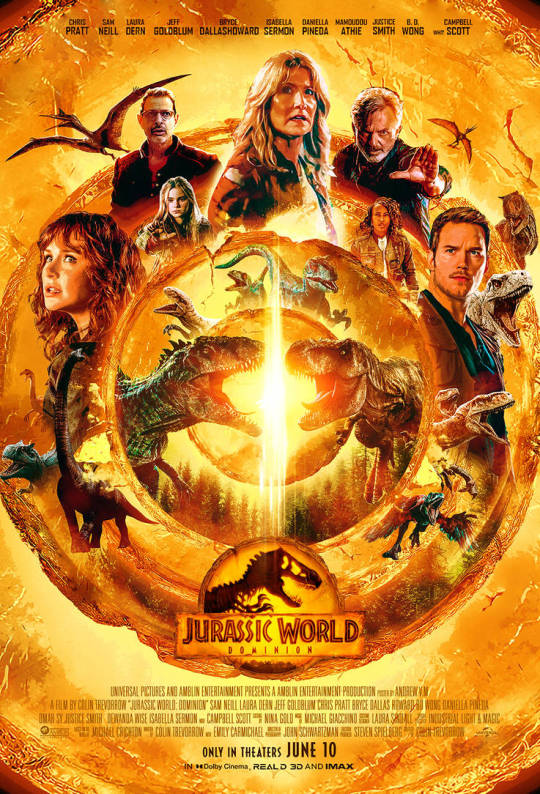
Jurassic World Dominion--Before discussing this supposed finale to the Jurassic Park series, I should offer my usual disclaimer: I'm a lifelong dinosaur geek. A movie with dinosaurs starts at as much of an advantage with me as, say, a movie about fighter jets does with a military aviation buff.
So take this into account this when I tell you that I thoroughly enjoyed Jurassic World Dominion. Which I did.
The premise here is that dinosaurs have become a regular fact of contemporary life, usually as a danger or a pest. The movie begins with an enormous mosasaur ruining the day of a commercial fishing boat, and from there director Colin Trevorrow, working from a script he co-wrote with Emily Carmichael, serves up one sequence after another of Mesozoic mayhem, as the revived reptiles cause traffic accidents, harass children, intrude on industrial sites and so forth. The beasts are also, of course, poached, illegally bred and otherwise exploited by humans.
The plot mixes the characters from the recent chapters, like Chris Pratt's raptor whisperer and Bryce Dallas Howard's Jurassic Park administrator turned dinosaur-liberation activist, with the heroes from the first film, Laura Dern, Sam Neill and Jeff Goldblum. Pratt and Howard are attempting to recover their adoptive daughter, the cloned child of a deceased JP scientist, as well as a young velociraptor, the offspring of Pratt's beloved Blue. Both have been kidnapped by a bio-engineering firm headed by creepy CEO Campbell Scott, and spirited off to an isolated research facility and dinosaur preserve in the Italian Alps.
Meanwhile Dern, startled by an invasion of locusts the size of baguettes that are decimating crops across the U.S., also suspects that the bio-firm is scheming, in the words of Simon Bar Sinister and Tears for Fears, to rule the world. She recruits her old pal Neill to help her infiltrate the facility, where Goldblum is gadfly-in-residence, and get proof. Eventually both sets of characters, along with an extremely glamorous pilot (DeWanda Wise) and a handful of other sympathetic parties, converge.
Along they way they are menaced by dinosaurs and other genetically-engineered perils. Raptors stalk our heroes through the streets and over the rooftops of Malta like assassins in a Bourne thriller. Dimetrodons chase them through amber mines. A giant flying Quetzalcoatlus attacks a plane in midair. Monstrous Giganotosaurus and sentimental favorite Tyrannosaurus Rex brawl like Japanese kaiju. And that's aside from the worst outbreak of giant grasshoppers since 1957's The Beginning of the End.
Best of all, maybe, is an eerie, dreamlike sequence in which Therizinosaurus, a predator that resembles an enormous downy pheasant with claws like giant salad forks, towers over Howard as she lowers her pin-up-beauty face into a swampy green pool. This scene is a good example of a strength that has benefitted the whole series but is particularly pronounced in Dominion: the superb sound effects. For all of the movie's visual effects splendors, it's the sounds of the creatures, from the enveloping yet somehow muted bellow of the T-rex to all of the distinctive squawking and hissing and clucking and chittering of the others, that really make them scary.
On the downside, with as much objectivity as I can muster as a sucker for dinosaurs, I must note that the dialogue in Dominion seems bland and inexpressive; even Goldblum has to push his comically diffident delivery harder than usual to wring laughs out his lines. And the story is so unnecessarily scattered that the movie loses momentum at times.
Trevorrow is an admirably free-wheeling talent; he made 2015's Jurassic World a wild ride. With a tighter, more streamlined rescue-mission plot, this one could have been similarly edge-of-the-seat. On the other hand, if it was a tighter movie, it might have lost some of its eccentricity, and therefore some of its magic.
#jurassic world dominion#colin trevorrow#laura dern#chris pratt#bryce dallas howard#jeff goldblum#sam neill#dewanda wise#dinosaurs
12 notes
·
View notes
Text
Pixar Films
I dislike Disney as an entity; it is an evil corporate conglomerate that makes focus-grouped schlock to appeal to as wide an audience as possible at the detriment of story. That said, Pixar was once the greatest animation studio on the planet.
Keep in mind, these are movies for kids, so anything negative I say will almost certainly be rebutted with “you’re just old and you don’t like Disney because it’s popular and you’re a hipster and you’re not even the target audience anyway so shut up.” I’m just giving my two cents, whatever that’s worth.
I’m not gonna rate them on a number scale, I’ll just tell you how much I would or would not recommend watching them. Some are must-see-cinema, others are bland and skippable affairs that you should not feel obligated to watch just because it has the Pixar brand on it.
Let’s start from the very beginning (a very good place to start)
Toy Story (1995) Groundbreaking, the first feature length 3D animated movie, spectacular cast, great story, though a little wonky by today’s standards both in the visuals (though that’s just a product of the times) and in the characterization (Woody is kinda of a jerk in this one; he was worse during pre-production, so this is the tame version). Pixar started off on the right foot. Would Recommend
A Bug’s Life (1998) This has some flaws, but is still a really fun movie. Not as good as Toy Story, but infinitely better than Dreamworks’ knockoff Antz. Great ensemble, memorable characters and set pieces, really funny. Would Probably Recommend
Toy Story 2 (1999) An excellent sequel, they knocked it out of the park with this one. It’s surprisingly deep, exploring concepts like the inevitability of change; nothing lasts forever, you can’t keep kicking the can down the road forever. The journey is finite, but that doesn’t make it worthless. Would Definitely Recommend.
Monsters, Inc. (2001) To date, their best original movie, maybe even better than Toy Story 2. Everything about it is perfect; John Goodman and Billy Crystal have great chemistry, Steve Buscemi plays the perfect sleaze, Boo is just adorable, it’s an excellent movie. Would Definitely Recommend.
Finding Nemo (2003) This is a beautiful movie; they had to invent new animation techniques to make it look this good, new ways for light to bounce and diffuse through the fishy medium. Amazing story, absolutely heart wrenching at points, hilarious at others, without feeling tonally dissonant. Would Definitely Recommend.
The Incredibles (2004) Another home run, they’re just showing off at this point. This is a much deeper and arguably darker story than any of their previous films. It doesn’t pull any punches and explores adult concepts like mid-life crises, extramarital affairs, death (oh, so much death; red shirt mooks and civilians alike). This may be my favorite (definitely top 3; I’ll expand the list below). Would Definitely Recommend.
Cars (2006) A competent movie, though by Pixar standards it’s not quite up to snuff. Not bad, by any means, but this one is the most blatant cash grab of them all, just a commercial for hot wheels and die-cast toys. I have a soft spot for it because this is the one I’ve seen the most; my mom would turn on this DVD to keep my baby sisters occupied, so it was literally always playing in our house. That said, I’m not nostalgia blind; it has good parts, but it’s not great. Would Probably Not Recommend.
Ratatouille (2007) C’est Magnifique! Patton Oswalt does a fantastic job, I identify with Linguini on a spiritual level, the human characters are all perfectly demented and the rats are equally so. I love this moral; anyone can be successful, it’s about who you are not where you come from. Funny and relatable, an all around feel-good movie. Would Definitely Recommend.
WALL-E (2008) Top 3, hands down, this is a true work of art, a modern masterpiece. A film mostly devoid of dialogue, it expresses so much emotion from how the characters carry themselves and react physically to their surroundings. The body language, the color choices, the camera work (especially in the space dance sequence), just how RAW everything is, how grounded it feels, how fleshed out these little robots are.. I Cannot Recommend This Enough, Watch it Right Now. Now. Why Are You Still Reading This? Now! Go Watch it Then Come Back. Even if You’ve Already Seen it, Go Watch it Again.
Up (2009) Another near perfect installment under Pixar’s belt. They’ve really nailed the art of opening scenes; Carl and Ellie’s love story moves me to tears, it is so beautifully portrayed. Some of the characters can be a tad annoying and overly cutesy to sell merchandise, but the story never suffers from it. The villain actually feels like a threat, there are stakes, and the image of a house sitting by a waterfall and the story connotations thereof are indescribably bittersweet. Would Definitely Recommend
Toy Story 3 (2010) This is is sort of hit or miss. It’s a very well made movie, and an excellent CONCLUSION to the Toy Story franchise (Conclusion: noun, the end or finish of an event or process). I liked it, felt it really wrapped things up in a satisfactory way, but it’s not better than Toy Story 2 in my mind. I feel like this was a turning point for Pixar; after this, they were never quite the same, never really bounced back. May or May Not Recommend, I’m on the Fence
Cars 2 (2011) You don’t give the comedy relief their own movie. That’s storytelling 101; the comic relief bit-character can rarely stand on their own and meaningfully carry a story, though corporations are laughing all the way to the bank as I say this because these types of movies keep making boatloads of money even if they suck. Minions made bookoo bucks, the Pirates of the Caribbean series is still ongoing despite the loss of Bloom and Knightly (and bringing them back for the last one doesn’t really count because Depp is still the main character), Cars 2 is a corporate cash grab, and devoid of artistic merit; this is my first hard no. Would NOT Recommend.
Brave (2012) This is not a Pixar film, it is a Disney film that they decided to make under Pixar’s name instead because they knew Pixar had enough good will and positive connotations to get people into seats regardless of story. It’s not terrible, but it’s not great. That’s the story of modern Disney; not terrible, not great, just okay because that’s all it needs to be. People will watch it no matter what, so they put in the bare minimum amount of effort so nobody can say they suck at making movies again (because for the longest time in the early 2000s, they did suck; Dinosaurs, Home on the Range, Chicken Little). Would Not Recommend.
Monsters University (2013) Why did you do this, Pixar? Why did you take one of your best movies and do this specifically to it? Nobody asked for this, nobody wanted this. I can only applaud them for having integrity enough to NOT give people what they wanted; people wanted a sequel, and that would have bee terrible. You can’t follow up on Monsters, Inc, it had a perfect ending, it was hopeful and heart warming and definitive. A prequel is the only thing they could have made without messing up the ending of the original, so I’ll give them some credit for that. It’s not good. Would Not Recommend.
Inside Out (2015) Their best one since Toy Story 3. Not terrible, I actually liked a lot of things about this one. I like it when Pixar takes on more serious subject matter, and I thought they did a good job exploring how a kid would react to such a drastic lifestyle change. The cast was good, the animation was fun (inside Riley’s head; outside was generic and samey). Not bad Pixar, not bad at all. Would Probably Recommend.
The Good Dinosaur (2015) It doesn’t matter what i think because this movie still made hundreds of millions of dollars. Disney is losing no sleep over this. Would NOT Recommend.
Finding Dory (2016) Again with the continuations! This was better than Monsters University, but the original was still such a hard act to follow. It had potential, and I liked how it respectably handled mental illness in a way that was easy for kids to understand without dumbing it down and underplaying its significance in the lives of those who it effects. I think Marlin kinda regressed, having to relearn what he already learned in the first one. The hardest I laughed was during the climax, the truck chase scene, “It’s a Wonderful World,” just amazing. Would Probably Not Recommend
Cars 3 (2017) I hope Disney was happy with this end product. I hope the producers really enjoyed cashing their toy checks for this one. I thought it was worse than Cars 2, but I can see why some people might like it more. Either way, it’s worse than Cars 1, which wasn’t particularly great anyway. Would NOT Recommend.
Coco (2017) I’m on the fence with this one. It was beautifully made, and the songs made me cry, but it’s hard for me to look at this movie without judging it as a product made by a focus group of mostly white people. By itself it’s a good movie, but when you know how the Disney sausage is made it feels disingenuous and calculated. Might Recommend, But it Had Some Baggage
The Incredibles 2 (2018) I am Boo Boo the Fool, Pixar suckered me and I fell for it. I was legitimately enthusiastic for this one because the original is one of their best, and unlike Monsters, Inc it actually left room for a sequel. It had so much potential, and big shoes to fill, and it did so in the most generic Disney way it could. Like Brave it wasn’t terrible, but it wasn’t great either. Middle of the road, some things were fun, others made little sense, it was “appealing” in that it literally appealed to as wide an audience as it could without alienating anyone by doing anything particularly risky. I liked Voyd, I liked how Helen became the main character, I liked the villain twist; I did not like how easy it was to make superheroes legal again. It felt like it was tacked on at the end, like he just says “and there we have it, they’re legal again, congratulations,” like he was announcing the winner of the Price is Right. Would Probably Not Recommend
Toy Story 4 (2019) I want to be clear that I made a point not to pay money to see many of the previous films on this list. If I thought they were going to suck, I waited until a friend bought it and saw it with them for free. This one, though, I was forced to pay for because my mom insisted on seeing it in theaters as a family. It wasn’t terrible. Wasn’t great. Wash, rinse, repeat. It was the same villain again; Stinky Pete, Lotso, Gabby-Gabby... I can’t wait for the fifth one where the villain is an old toy who is mad because they weren’t played with. Buzz was made much dumber for this one, and I felt they didn’t do enough with Forky. I was excited to see how they handled the existential aspects of the series; what makes a toy? How are toys sentient? Why are toys sentient? In the first movie Woody implied that there were rules that toys were honor bound to follow, so what is stopping Forky from blowing their cover on accident? None of these questions were answered. I liked Keanu Reeves, I didn’t like Key and Peele. Would Probably Not Recommend.
The mighty have fallen. It’s just sad.
”Onward” looks kinda dumb, like a kiddy version of the flop Will Smith movie “Bright.” I have no faith in this production company anymore, but I’m sure it will make hundreds of millions of dollars; the cast are fan favorites, including Disney’s favorite topical pet celebrities (because let’s be honest, Disney basically owns Tom Holland at this point. Whether they own Spider-Man or not, they own Tom Holland, he is theirs, his soul contractually belongs to them).
Speaking of souls, ”Soul” will probably go over well with critics, though I can’t help but notice that their main character of color is transformed into a non-human for most of the movie. Again. I’m also not a fan of this one-word naming convention Disney has fallen into in the last decade. “Brave” was originally titled “the Bear and the Bow,” but one-word titles seem to test well with kids. Hopefully this will pass, but I’m not holding my breath.
I’m swearing off Disney movies, firsthand. I might catch them second hand, through friends or other means, but I refuse to give this corporate conglomerate one more penny. They basically own Hollywood, so my money will eventually make my way into their pockets, I just want to put as much distance between them and myself as possible. No more Pixar, no more Star Wars, no more Marvel, no more Disney. I am one drop in the bucket, I will not be missed, and they will not be affected in the slightest by my absence, but I need to prove to myself that I have integrity enough not to keep funneling my hard earned cash into a trillion dollar snack company.
Disney movies are snacks, not meals. And I’m going on a diet.
Anyway, here’s my top three:
Monsters, Inc
The Incredibles
WALL-E
#my stuff#Disney#Pixar#pixar movies#walt disney studios#walt disney pictures#toy story#a bugs life#toy story 2#monsters inc#finding nemo#the incredibles#cars#ratatouille#wall-e#up#toy story 3#cars 2#brave#monsters university#inside out#the good dinosaur#finding dory#cars 3#coco#the incredibles 2#toy story 4#onward#soul#animated movies
13 notes
·
View notes
Note
What do you love the most about WestAllen and what do you dislike about their story?
These are loaded questions, to be quite honest, because there is so much I love about Westallen, and this could turn into an extended essay therefore, but I’ve already done that numerous times. I also find it hard to pinpoint what I love most about Westallen, because it’s easy for me to say everything and leave it at that. Additionally, there are isolated things that I dislike about their story and journey, but that has to do with inadequate writing.
I think what I love most about Westallen is the lightning rod concept. It provides for a unique love story rooted in super-heroics and grounded in deep childhood adoration. The idea of the lightning rod obviously originates from the comics, but it’s been translated into live action beautifully, and I do have to commend the writing for seamlessly weaving it into the very fabric of not just Barry and Iris’s love story, but of the show as well. It’s introduced in “City of Heroes,” when Barry and Iris are reunited after Barry’s coma: he discovers his powers with her in his arms. He is able to super sonic punch Girder, because Iris is in danger. He time-travels for the first time, after kissing Iris for the first time. When visiting Barry’s bedside, while he is in a coma, Iris feels a spark of electricity between their fingers; she later feels that same jolt when she tries to grab hold of the Flash’s hand, as he races away from her, and this is all that it takes for Iris to discover that Barry is the Flash. It’s a beautiful, physical connection between them; it connects Iris on a deeply powerful plane, both physical and metaphorical, to everything Barry is- to his abilities, to the speedforce. I’ve always thought that Iris understands the depth of this physical energy between them before Barry does, because the moment she finds out Barry is the Flash, she begins actively utilizing this powerful cord that binds them to bring Barry home. It’s partly because she knows of the depth of the love that they have always shared, even before she is ready to realize that that love has always been deeply romantic. Thus, when Barry is mind-controlled by Grodd, Iris instinctively knows to speak to him over the comms, and her voice is what breaks Barry out of Grodd’s mind-control.
In “The Runaway Dinosaur,” Iris is even more proactive. She volunteers to enter the speedforce, tells Barry to come home to her, and brings him back. There is a renewed energy between them; indeed, it’s brimming with realized romantic love, but it’s an understanding that there’s something powerful between them that binds Iris to Barry in ways that no one else can be bound. In “Flashpoint,” Iris barely knows Barry, but there’s an instant connection (“This is what love feels like.”). She capitalizes on the depth of what she feels for this man she thinks she only just reconnected with to return his vanishing memories. “Cause and Effect” provides the foundation for the lightning rod connection, as it delves into the longevity of Barry and Iris’s love. When Iris recalls the memory of her younger self comforting her best friend after his mother is murdered, to return Barry’s memory, she understands then that that was the night they fell in love: they were only eleven-years-old at the time. It’s the purity of their love and the longevity of their love; it’s the fact that they are each other’s rocks and that Iris believed Barry when no one else did that is the foundation for the lightning rod connection. For this physical, powerful connection where Iris can reach Barry when and where no one else can existed long before the particle accelerator gave Barry powers. Thus, in “The Flash Reborn,” Iris is able to restore Barry’s mind, by risking her life against the Samuroid, and he returns to her, faster than ever. And in “Enter Flashtime,” Barry calls Iris his lightning rod for the first time. The lightning rod connection is also tied to the love-transcends-spacetime aspect of their love story, which is why it was especially lovely to see the roles flipped in Elseworlds, with Barry drawing upon their connection to convince Iris that he is her Barry.
What I dislike about Westallen’s story has to do with writing choices. I found their past love interests (Eddie and Patty) superfluous and honestly hindered the story, creating convolution and allowing for annoying misreadings of a narrative and love story that has been clear from the very beginning. I also think that Eddie telling Iris about the future newspaper article was a cop-out for Eddie to go out as a bigger hero, when I think that was a bad writing choice at the time for Barry and Iris. While I was ecstatic about the reveal of the future article, I didn’t want Iris to find out until she was willing to act on her romantic feelings for Barry. She’d already subtly acknowledged them in “Grodd Lives,” and we know they’ve always been there since her declaration in “Out of Time,” but telling her of the future article felt like such a “tell don’t show” moment for Westallen that serviced Eddie’s arc in the finale. I also dislike how a lot of Westallen’s firsts weren’t shown (like their first time) or rushed. I think giving them a crash course in parenting, as Todd put it, was a ridiculous way of premising Nora’s story, and again, took away more firsts for Westallen. In hindsight, I really understand Barry’s point about his life always being out of order. Then there’s the fact that Barry and Iris arguably have the best television proposal ever, but weren’t allowed to have an uninterrupted wedding and reception. Iris didn’t have a line of dialogue at her own rehearsal dinner. The abuse (and by abuse, I mean the subconscious misogynoir in the way they treat Iris, by refusing to show sexier moments between Westallen, while putting Iris through emotional trauma over her motherhood and showing her being stabbed repeatedly) the writers project onto Iris through their writing has always been problematic and has affected Westallen’s story, because Iris is shortchanged romantically where white leading ladies wouldn’t be. They’re always going to be my most significant OTP of my later fandom experiences, but there are so many things I would have done differently, because I feel as if they were shortchanged in so many areas, narratively.
#replies#anonymous#this is super long and i don't want to clog up the tags so i'm keeping it untagged#my meta
8 notes
·
View notes
Text
New Xbox One Games for February 25 to 28
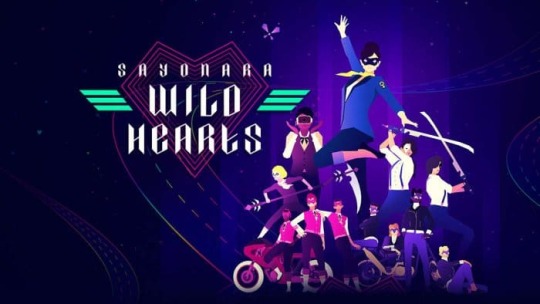
New Xbox One Games for February 25 to 28.
Kingdom Hearts III Re Mind (February 25)
Re Mind—The other tale that unfolded during the climax of KINGDOM HEARTS III. Determined to rescue Kairi, Sora travels to the Keyblade Graveyard a short time before the final battle was to take place. Lacking a corporeal form, he traces the hearts of the seven guardians of light. Through experiencing their personal battles firsthand, Sora is about to discover truths that he has never before imagined.
Infliction Extended Cut (February 25)
Wander through an interactive nightmare set within the confines of a once-happy household. Uncover the heartbreaking mystery hidden within messages, artwork, household objects, and other vestiges of domestic life all while struggling to survive encounters with an entity that relentlessly stands in the way of finding absolution.
Two Point Hospital (February 25)
BUILD, CURE and IMPROVE! Design stunning hospitals, decorate them as you like, cure very unusual illnesses and manage troublesome staff as you spread your budding healthcare organization across Two Point County. Two Point Hospital includes two DLC - "Bigfoot" and "Pebberley Island." Design and build your own hospital Build up a hospital from nothing to a masterpiece as you design the most beautiful – or functional – healthcare operation in the whole of Two Point County. Cure unusual illnesses Don’t expect Two Point County to be populated with your usual types of patients. In this world, you’ll experience Two Point's trademark quirky illnesses; from Light-headedness to Cubism – each requiring their very own special type of treatment machine. The County's the limit Your first hospital is where it begins, but what next? https://youtu.be/ATxBPTj8fvU
Wasteland Remastered (February 25)
Originally released in 1988, Wasteland brought the post-apocalypse to video games and inspired a genre. Play one of history’s defining RPGs with completely overhauled graphics, sound, and expanded musical score. The year is 2087, nearly a century after an all-out nuclear war turned vast swaths of the Earth into a radioactive hellscape. You are a Desert Ranger, a band of stalwart lawmen who are the only hope left in what was once the American southwest, and good people’s last defense against hunger, sickness, ravaging raiders, and mutants. Now something more secretive and sinister is menacing humanity, and it's your job to investigate. Recruit help and follow leads—the choices you make will shape the world around you. Choose wisely, your life and the lives of those you’re sworn to protect depend on it. Features: Wasteland Remastered retains the spirit of the original game while updating visuals and audio.The original game’s physical storybook is available in-game, fully illustrated and with full voice over.An expanded musical score from the "Wasteland 1 - The Original Classic" release.Old bugs that have been around since Reagan was president have been fixed.Survive the apocalypse from the comfort of your couch with full game controller support.Quality of life improvements that make the post-apocalypse a little friendlier. https://youtu.be/W6KF4xc-cd4
Ark: Survival Evolved – Genesis – Part 1 – (February 25)
Continue your quest for survival and unlock a whole new chapter in the saga of Ark: Survival Evolved with the Ark: Genesis Season Pass! This Season Pass gives you access to two new huge expansion packs and one exclusive in-game cosmetic pet. Further the Ark storyline while adventuring through unique and diverse biomes via an all new mission-based game mechanic. Discover, utilize and master new creatures, new craftable items and structures unlike anything you have seen yet.
Mega Man Zero / ZX Legacy Collection (February 25)
Six classic titles in one compilation: Mega Man Zero 1, 2, 3, and 4, as well as Mega Man ZX and ZX Advent. In addition to the original games, this package includes an artwork gallery, music player, special filters, and much more. Casual Scenario Mode and a Save-Assist feature are available for those who would like to enjoy the story at their own pace. Players can also try their hand at the new leaderboard-based Z Chaser Mode, an exclusive new mode created just for this set of games.
Hayfever (February 25)
Help Thomas the Allergic Mailman gather all his lost letters in this challenging and unique 2D platformer! In Hayfever, the player takes control of Thomas – a young postman with a strong work ethic. There is just one tiny little issue… Thomas suffers from terrible (and we mean TERRIBLE) allergies. It is up to the player to use Thomas’s allergies to help him traverse a dangerous world, turning his weaknesses into strengths! Different allergens have different effects on Thomas – radically changing how he interacts with the world. Regular pollen allows him to build up a big sneeze to propel himself through the air. Smog, on the other hand, makes him swell up like a balloon. Peanuts… Well, peanuts are a WHOLE other story. Features: Quirky retro-inspired graphicsDemanding, sneeze-driven mechanicsFour worlds, spanning all four seasons140 levels, with 240 letters to collect (legend has it that collecting enough letters unlocks extra, extremely challenging levels…)Allergy-fueled gameplay ranging from pollen and smog to nuts!An A.M.A.Z.I.N.G soundtrack
Sayonara Wild Hearts (February 25)
Sayonara Wild Hearts is a dreamy arcade game about riding motorcycles, skateboarding, dance battling, shooting lasers, wielding swords, and breaking hearts at 200 mph. As the heart of a young woman breaks, the balance of the universe is disturbed. A diamond butterfly appears in her dreams and leads her through a highway in the sky, where she finds her other self: the masked biker called The Fool. Journey through a custom-written pop soundtrack, chase scores, and set out to find the harmony of the universe.
Edgar – Bokbok in Boulzac (February 26)
You are eccentric outcast Edgar, living in the woods with your chicken and beloved squash crops. Unfortunately, a sudden disaster forces you out of your shack and towards the bright lights of the big city, Boulzac, where an 800 year old fire rages beneath the surface, and weird things are afoot. Explore a strange and comic universe, meeting its unhinged (and unforgettable) inhabitants and discovering ancient secrets. Unveil the surreal conspiracy holding Boulzac together. Trek above and below the light city. Enjoy whip-smart dialogue, surreal adventures and satire. Equal parts whimsical and dark: you’ve not met a cosmic horror like this before. It is developed by La Poule Noire, a cooperative that aims, through its productions, to make fun of social trends. In Edgar, conspiracy theory is at the heart of the plot.
Grizzland (February 26)
A seamless open world platformer presented in a retro style and filled with old-school challenges. Explore without pointers to uncover secret areas, equip yourself with unique items and skills, even the ability to shrink and enlarge or explode and recombine. Only through self-discovery will you overcome enemy dinosaurs in epic combat and find the truth of Grizzland.
Ganbare! Super Strikers (February 26)
An innovative mix between tactical RPG and soccer. Win matches to level-up and earn new equipment that will allow you to learn special abilities, boost your players’ stats or protect yourself against altered status effects, such as Sleep, Silence or Poison. Assume the role of a small-town soccer team in Japan on their way to victory. Perform well enough and you will be selected to join the National Team where you will need to play alongside old rivals in order to conquer the world.
One Finger Death Punch 2 (February 26)
You’re surrounded, outnumbered and must use any weapon you can get your hands on to dismantle your opponents in a flurry of kung fu. That’s the essence of OFDP2, the world’s fastest brawler. It features the original’s unique two-button mechanics where speed and precision are key in this whirlwind fighting frenzy, as players maintain control over the 26 different unlockable skills, frenetic gameplay, and classic kung fu-inspired animations.
House Flipper (February 26)
House Flipper is your chance to become a one-man renovation crew. Buy, repair, and remodel devastated houses to give them a second life and sell them at profit. What you’ve got at your disposal is a set of tools and parts to hammer, drill, nail and screw things together, and do whatever is necessary to fit, fix or clean up. Then experiment with interior designs and decorating styles you like with hundreds of items that to choose from. https://youtu.be/nh4zuyi7vVM
Vasilis (February 26)
Vasilis is a hand-drawn adventure game. Vasilis, the main character, has lost her husband Peter in the rebellious city center. The city has plunged into chaos by constant riots, and almost every day something is burned or someone is killed. Having been abandoned by the government, the center is now dominated by local workers and students, who were able to build four towers that bring life back to those that have died. Vasilis is a game which focuses on characters and story. It is divided into five chapters in which the player will deal with riots, cults, and cruel war events.
Castle of No Escape (February 26)
Explore a mysterious castle full of monsters and secrets on a quest to collect treasure (that will also protect you from the curses on your way) and crush the main boss. The game won’t let you exit the castle, no matter how you try; technically you can win, but there is no end.
Castle of No Escape 2 (February 26)
Prepare yourself for the dangers of the cursed castle where countless heroes have tried and failed to destroy the ancient spell held in its walls where hundreds of monsters roam, guarding the sword shards — the last known thing to be capable of defeating the demonic castle’s owner. Plan your steps carefully, because save points don’t exist in the Castle of No Escape.
Yakuza 0 (February 26)
The glitz, glamour, and unbridled decadence of the 80s are back in Yakuza 0. Play as Kazuma Kiryu and discover how he finds himself in a world of trouble when a simple debt collection goes wrong and his mark winds up murdered. Then, step into the silver-toed shoes of Goro Majima and explore his “normal” life as the proprietor of a cabaret club. Fight your way through Tokyo and Osaka by switching between three different fighting styles instantaneously and beating up all manner of goons, thugs, hoodlums, and lowlifes. When you’re not fighting, kill time in 1980s Japan. From discos and hostess clubs to classic Sega arcades, there are tons of distractions to pursue in the richly detailed, neon-lit world.
Spartan Fist (February 28)
Fight your way to fame, fortune and glory in this first-person puncher rogueltke as you work to retrieve the fabled Spartan Fist. Playing as Emma Jones, a down-and-out detective working to earn her keep, you’ll tap your inner badass as you punch dudes so hard they explode. Navigate through an arena that’s different each time you play and delve into a whimsically gritty and colorfully punk pixilated world while fighting your way to the top.
One Punch Man: A Hero Nobody Knows (February 28)
Dive into a dynamic fighting game experience with beloved characters from the first season of “One Punch Man.” Play as your favorite hero… or become one! Create your own hero avatar and choose your own set of powers and abilities with edge of your seat fighting and dynamic 3v3 fighting featuring events as seen in “One Punch Man” such as meteors and other heroes. Pre-order to receive early access to play as Saitama (Dream Version), Saitama (Black Suit) outfit, Saitama (Jersey) outfit, and Saitama Mask avatar part. https://youtu.be/1Qf8K7K6GaY
Stab Stab Stab! (February 28)
A brutal, physics-based, couch multiplayer fighting game where you stab your friends until they pop. Play as explosive fleshbirds with razor sharp beaks through vicious combat as you battle your friends in versus mode or team up in survival mode against the mindless hordes of cronenbirds across 12 unique and deadly arenas.
Bucket Knight (February 28)
Even knights must pay taxes, loans, and alimony. Help an unnamed, brave knight in his sacred mission to find the Holy Grail (and make some money). Explore dungeons, slay enemies, avoid traps, stay alive and get rich in this classic styled run-and-gun platformer. Read the full article
1 note
·
View note
Text
Wednesday Roundup 4.10.2017
This week ended up being a relatively light reading week for yours truly, but that doesn’t lessen the quality of my enjoyment whatsoever. In fact, I had enough love to share that I wanted to go over all of the available Marvel Legacy Primers for this week as well, even if they’re just short blurbs!
So without further ado let’s jump into it.
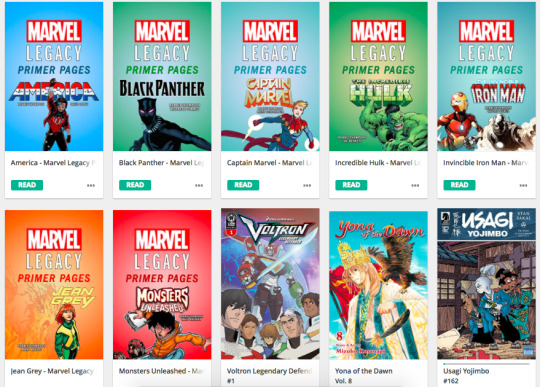
Marvel’s America, Marvel’s Black Panther, Marvel’s Incredible Hulk, Marvel’s Invincible Iron Man, Marvel’s Jean Grey, Marvel’s Monsters Unleashed, Dark Horse’s Usagi Yojimbo, Lion Forge’s Voltron Legendary Defender, Viz’s Yona of the Dawn
Marvel’s America - Marvel Legacy Primer Pages (2017-present) Robbie Thompson, David Lopez
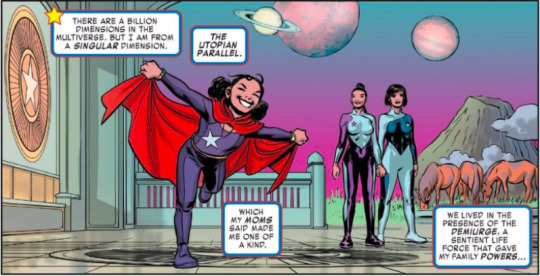
As interested as I am in America, I haven’t had the opportunity to really follow her outside of the Young Avengers run she is in. So I think, oddly enough, for me this is one of the most necessary “Primers” of any of the ones I’ve read so far, and the information was very good to have. It really helped to frame her history, her relationship with her mothers, and her confidence in herself in a new light that is really appreciated. And the art from David Lopez is as beautiful as any of his issues on All-New Wolverine.
Marvel’s Black Panther - Marvel Legacy Primer Pages (2016-present) Robbie Thompson, Wilfredo Torres
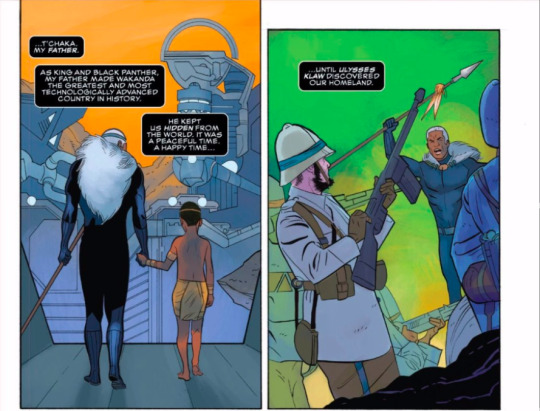
There’s honestly not going to be that much more to say on most of these Primer pages. They’re fun, quick run throughs of relevant histories of the characters and teams that they showcase and depending on your interest and engagement may influence whether or not you want to hop in on the next storyline that they’re promoting.
I do like the sense of unity and legacy that is built into the Black Panther title already, having it be a responsibility tied to kingship that T’Challa knows and the all-important bond it has between him and the memory of his father.
It really puts a spin on the importance of Legacy that this event seems intent on hammering home.
Marvel’s Captain Marvel - Marvel Legacy Primer Pages (2016-present) Robbie Thompson, Brent Schoonover
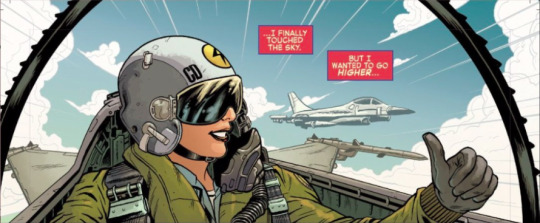
Carol Danvers is one of those characters I desperately want to lie on every feasible surface level, but whose books have never quite got me on board and whose guest appearances always leave me a bit more confused about her than I had been before her said appearance. And yet there was still not a whole lot added here. I appreciate it, and young Carol is adorable, but there was nothing here that didn’t make me feel like... well, like she’s Hal Jordan. And ‘m not a fan of Hal Jordan.
Marvel’s Incredible Hulk - Marvel Legacy Primer Pages (2017-present) Robbie Thompson, Joe Bennett
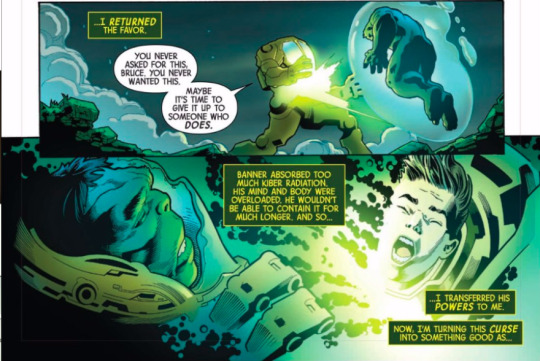
Everything I have read so far with Amadeus Cho, both in Totally Awesome Hulk and in his guest appearances or team-ups in Moon Girl and Devil Dinosaur to Champions has really connected to me on a level that Bruce Banner hadn’t exactly managed over the years. So it was nice to see a little blurb that went over their mutual histories and explored what was there.
It almost makes people forget that Marvel unnecessarily killed Bruce Banner for... no reason. Almost. Not quite. Though he might be alive by now. I am obviously not current.
Marvel’s Invincible Iron Man - Marvel Legacy Primer Pages (2016-present) Robbie Thompson, Valerio Schiti

Gah, reading this overview of Tony and Riri’s history really reminded me how much I really loved reading Invincible Iron Man when it first came out and just how much I positively adored Riri’s character and her banter with Tony. You know. Before they completely undid the relationship within the first storyline and then Bendis went all Bendis on us and it became obvious that Tony was coming back sooner than later and then Secret Empire destroyed the world... somewhat literally.
I’d love to read a Riri-centric book in better circumstances. Or at least once the next trade is out. We’ll see.
Marvel’s Jean Grey - Marvel Legacy Primer Pages (2017-present) Robbie Thompson, Mark Bagley
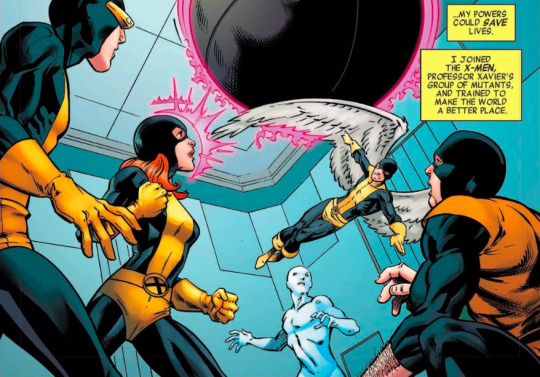
I was actually just recently talking to my good friend @shobogan about how much more interested I would be in Young Jean Grey if only Marvel had the guts to either give us a romantic relationship with her and Laura (or her, Laura, and Scott OT3 hullo) or have Older Jean Grey return to mentor her younger self and others at the school since she’s the only X-Man kept dead for this long who was considered a Top Tier X-Man. And since we’re finally getting the latter, it seems, now I have to look at what we know of Young Jean and consider my feelings all over again. And this primer gave me the opportunity to do just that!
While I’m not following Jean’s book at the moment, I’m obviously a pretty big X-fan so I have a general sense of where all the moving pieces are at the moment. And I have to say, with Older Jean returning it’s going to be a pretty awesome time for comparing and contrasting their characters and relationships. After all, this younger Jean is far, far less experienced than her counterpart, but has a peripheral knowledge of her own fate, and as much as she tries to not be defined by it, it’s been defining her in the opposite direction in a sense. And more than that, she’s a Jean who sees the Phoenix Force not as an asset or a tool, but sees it as an honest to god enemy, which I’m not sure how that will work. And I’m even more interested in Jean’s return now because of the possibilities of their interactions with the Force together.
Guess we’ll wait and see!
Marvel’s Monsters Unleashed - Marvel Legacy Primer Pages (2017-present) Robbie Thompson, David Baldeón
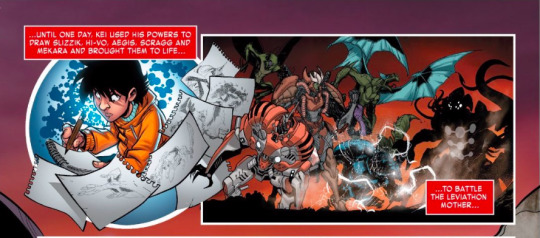
I have actually been planning for a little while now to pick up the trade of Monsters Unleashed because I had fun with the miniseries earlier this year and I have been craving more Elsa Bloodstone (as well as the entirety of the Nextwave crew) and this seems like one of the more interesting powers to come from the Inhuman collision.
.... Actually it’s completely stolen from the Teenage Mutant Ninja Turtles comic and later adapted TV episode dedicated to Jack Kirby who had the power of creativity to draw and create anything he drew and also had a a penchant for creating monsters and different worlds and so on. So I mean. There’s that unavoidable fact. But Kei’s cute so I’d be willing to overlook it for the sake of seeing what Marvel plans on doing with this very wild and unruly power.
Dark Horse’s Usagi Yojimbo (1984-present) #162 Stan Sakai, Tom Luth

The conclusion of Usagi and Inspector Ishida’s investigation about the doctors’ murders has come and the hilarity of Kitsune and Kiyoko bumbling along with them and incidentally becoming crucial to the entire investigation does not lose its edge either.
Story: The conclusion of this particular caper is interesting mostly in how the framing by coincidence is not ultimately a linchpin to the story, having been solved almost immediately in the story’s first issue. The inventiveness of Sakai’s work, overall, is simple subterfuge which continues to make each new adventure feel unique and uncertain. In this instance, it would be in the assistance that Kitsune and Kiyoko end up providing by revealing the true murderer almost by accident.
That being said, as simple as individual stories are for Usagi Yojimbo, the complexity really rests in the margins for long time fans, and that shows most clearly in the way a quiet buildup of several arcs seem to flow together for coming to a head. Perhaps the most famous and arguably best all around example of this would be in “Grasscutter” and how years of storytelling and slow vignettes linking together culminated in one of the greatest comic storylines of all time. We seem to be getting something similar in the backgrounds of more recent adventures with this guild of assassins which Usagi has unknowingly crossed the path of and caused ire to several times at this point.
I’m excited to see where that story is taking us, and likewise interested in how little details, like Kiyoko successfully pickpocketing Inspector Ishida, will pay off down the road.
Lion Forge’s Voltron Legendary Defender Vol. 2 (2017) #1 Tim Hendrick, Mitch Iverson, Jung Gwan Yoo, Ji-in Choi

Egghhhhh. Are you ever really rooting for something against your own common sense and get bit in the butt regardless? I feel like that happens to me on an inconceivably high average and almost all of it can be blamed on the fact that for some reason I am still expecting comics to play fairly with me. If anything my standards should be lower by now. But, well, let’s see if I’m being a bit too harsh on Lion Forge’s second effort in making a Voltron comic.
Story: I would argue that one of the reasons that I had unreasonably high expectations for this comic is in part because the first comic produced by Lion Forge had actuallymanaged to not only be a fairly solid effort as a comic but managed to capture the spirit of the current Dreamworks Netflix series in a wa that was welcoming to fans new and old, and importantly of all ages. So I was hoping for more of the same with this comic project.
In more or less words... I did not exactly receive that. Where there was a solid read of the characterizations in the last comic, this issue showed a severely flattened to the point of parody version of the paladins, especially poor Hunk here who had the already obnoxious and unnecessary fat jokes and food jokes from the series amped up to the point of being his only characteristic in this comic. To the point that at one point he doesn’t even form a full sentence, just grabs a pie successfully from a training maze and says “Hunk win”. Which... I guess is somewhat better faring than the other paladins who didn’t even have dialogue that really fit them. Save for Pidge who was likewise flattened to “the smart one.”
The storyline itself of a new planet where Voltron is needed but the species they end up helping... they actually fail initially, I won’t lie, is a pretty solid premise for Voltron overall, and would be something I’d love to see the show tackle similarly, but the fairly generic wolf-furry aliens didn’t receive a whole lot of depth in this first issue.
Depth trended on being the biggest problem for this issue overall. There wasn’t an examination of the characters and their interactions, how they treated each other and how they tackled problems differently. The sort of things you’d want from an ensemble cast like Voltron. Which is surprising since again the first series by Lion Forge managed all that and was written on a much younger reading level at the same time. Each issue tackled exactly those very things -- individual characters, how they functioned in the group, and how they tackled obstacles differently to find a solution together. I would expect the same here but it didn’t seem to be on the menu.
Hopefully all of this will be addressed and fixed as the comic progresses, but as for now I’m apprehensively putting this series on my three issue trial run.
Art: The art was not a great improvement on the previous comic but it also wasn’t bad in the least. In fact I think the art popped very well, adjusting colors and textures about as well as you’d expect from a television show adaptation for kids. I do wish that the face models for the paladins would keep more consistent and overall there was a rushed feeling to the comic that seemed fairly unnecessary considering it’s the first issue.
Viz’s Yona of the Dawn (2009-present) Vol. 8 Mizuho Kusanagi

You know, I keep hearing over and over again from friends and trusted sources that Yona of the Dawn is a series that will continuously subvert my every expectation and make me continue guessing and yet every volume I really do manage to be caught off guard by something which the story chooses to do which is shockingly poignant and new even to its fairy tale epic adventure structure.
Story: So the Yellow Dragon joining the group was hilariously and purposefully anti-climactic but what we got as a result of that choice is the new direction for the series that ties directly into Yona’s own self-realization. She doesn’t simply want to rule and she doesn’t simply want to conquer. What she wants is to know her people and to save them from the crises that were overlooked by her father before her and by Su-Won now. She wants to take up arms to protect the entire country not just with the power of the loyal followers she has gained but with her own hands. She is something that neither of the kings -- her father or her cousin -- could have ever dreamed of being.
And then my expectations were really taken for a loop by us then in turn following Su-Won as he travels to the Earth Tribe and earns the respect and allegiance of the chieftan general there through a series of manipulations, tactical conceits, and ultimately quiet and subtle intimidation mostly by the fleeting moments in which he dropped his ditzy and well-meaning act to show his true intentions. But as fascinating as it was and as surprising as it was, for me at least, that this complete shift of POV for a few chapters actually managed to keep me on board when I’m not one to often fully appreciate the “villain’s side of things”, probably the most interesting part of any and all of this is actually how much tension is underlying Su-Won’s leadership. HIs appeal to the Fire and Earth Tribes is less in the leadership that he promotes and more in this current of possible warmongering that appeases the more warlike fractions of Kohka.
It’s all fascinating and offers a sense of danger in Yona’s new quest to help the people of fher country feel a new sense of danger, knowing that our group is ultimately pretty unprepared for helping parts of the country which would not be as receptive to their quest or the offer of Yona’s leadership.
That being said... the final chapter driving home Yona’s relationship with Hak and everyone’s strange obsession with protecting Yona but rejecting her attempts to grow her own strength and independence. Lik eI guess we’re just all going to overlook the way she killed the slave trader mob boss in teh previous volume. But beyond all of that, my real concern is just... I cannot stand the way Hak’s character is portrayed in his “over protectiveness” of Yona. It’s far from romantic to me to continuously have a character obsess over someone to the point of “jokingly” considering locking them away for the world to see.
It’s not the best issue of the series by far, but it has some great moments, especially for Yona.
Art: I actually do think that the further we’ve come in this comic, the more consistent and confident the at has gotten. There are still lots of soft tones and all the markings of a usual shoujo, but the real stand out this time around is that we’re beginning to see more and more the variation in ethnicities in the people of the country, which is honestly relieving even if for now the Earth Tribe, which drives that point home, consists mostly of Su-Won’s supporters and may carry with them some more unfortunate stereotypes being fed that I might not be aware of as a non-native to Japan.
So far as single issues this week are concerned there’s really no competition for Usagi Yojimbo in a regular week but especially not in a fairly light week. Yona is still a fantastic book and if there were other trades to compare it to I’d probably lavish on it more, but since we’re on singles I have to give this one to the unending quality that is Stan Sakai’s anthromorphic feudal epic.
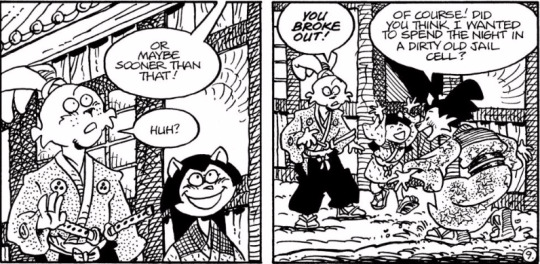
And, once more, I am in a bit of a financial crunch for a multitude of reasons, not the least of which being the medical bills I’m paying for my dog, Eve, who experienced a catastrophic dog fight and underwent surgery recently. On top of that, I have exactly a month and a half to pack up everything I own and move halfway across the country again which is not helping those financial crunches I mentioned before either.
As such, I really would appreciate if you enjoy my content or are interested in helping me out, please check out either my Patreon or PayPal. Every bit helps and I couldn’t thank you enough for enjoying and supporting my content.
You could also support me by going to my main blog, @renaroo, where I’ll soon be listing prices and more for art and writing commissions.

RenaRoo Ko-Fi

RenaRoo Patreon

RenaRoo PayPal
#Rena Roundups#Wednesday Spoilers#SPOILERS#Usagi Yojimbo (1984 )#America (2017 )#Black Panther (2016 )#Captain Marvel (2016 )#Incredible Hulk (2017 )#Invincible Iron Man (2016 )#Jean Grey (2017 )#Monsters Unleashed (2017 )#Voltron Legendary Defender Vol. 2#Yona of the Dawn (2009 )
4 notes
·
View notes
Text
Reflection on Comics Production
As a MLitt student, taking the Comics Production module was a challenging yet meaningful experience. For starters, I have never learned how to draw nor how to use visual editing tools. I did not take the Creating Comics module in the previous semester nor any course on scriptwriting. In other words, I am just a beginner to the comic scene. Therefore, I was thrilled when the module started.
On the first day of the semester, we were given the task to write our own script entry for a 2000AD competition. I did not expect the first thing I do for this class was to produce a story independently, with no prior sessions on how comic scripts work or how to write a comic story. Upon learning about the project, my classmates started to discuss on their ideas right away while I was still worrying about how to make a story. Taking the direction of science fiction, I began to look for inspiration…
Back in December, I went to Denmark and visited a science fiction exhibition in the Brandts, an art museum in Odense. The exhibition content was richer than I thought, ranging from the themes of dinosaur, earth’s core, under the sea, space, Egypt myth, alien, cyborg, superhero, utopia/dystopia, etc. It showcased re-imagined props, models, landscape designs, books, and movie clips. I found them intriguing and useful for brainstorming and visualizing some early ideas for the comic. The exhibition showed how much potential the science fiction genre can offer to widen the scope of storytelling. I really like the idea of robots are evolving and blending in our lives. It makes me question the difference between humans and machines. I decided to include robotic characters that disguise as humans in the story.

Picture from The Painted Skin (2008).

Picture of K/DA Ahri from League of Legends by Riot Games.
I had the idea of modernizing a Chinese folktale, The Painted Skin, as a monster disguises herself as a beautiful woman to lure men and rip their hearts out as her meals to maintain her façade. Similarly, Ahri, a character from my favourite game League of Legends, is a nine-tailed fox from the Asian folklore who also has to absorb human essence in order to stay in her mortal form. In the game’s alternate universe, Ahri is part of a virtual music group “K/DA” made by Riot Games to promote a set of in-game skins. I was hoping to create an intergalactic band like the “K/DA” that travels across the planets to perform, but they are actually robots that have been sucking out the happiness from their audience to become more like humans.
Whenever they perform live, their music would absorb the enthusiasm from the crowd, leaving them depressed and lifeless. However, their music is not strong enough to manipulate strong and deep emotions. As a literature student, I believe that only humans are capable of writing literary pieces that can truly move the others. Therefore, I introduced a poet as the main protagonist who goes around with his poems. One day, a band member took the poet’s collection and decided to turn his poem into a song. In the end, when the band performed it, the song was so genuine and powerful that it drove the audience crazy and killing themselves. This would grant the robots so much “human energy”.
In mid-February, Monty dropped by the studio to give the class some advice on the project. I showed him the synopsis and he pointed out that the protagonist does not really have a motive. He suggested me to write more about the poet and his active investigation into the band. He explained this would allow the readers to attach and follow the poet around to participate in the discovery of the truth together. By the time the secret is revealed, it will have a bigger impact.
However, I could not think of any legitimate reason for a poet to wander around the band to do investigation. And I do not have any poetic verse on my mind to put into the lyrics to show how “powerful” these poems are. Therefore, I realized this character is not suitable for my comic anymore. I changed his character to a detective which I believe it has a more reasonable motive to get suspicious over the band and can carry out some form of investigation.
I amended the synopsis to the following:
“Following a detective who connects the mystery of increasing depression rate to the intergalactic music band Soulstealers, he investigates before the band is going to perform on his planet. During his talk with the band members, he leaves his poetry collection to them as they are interested in it. After a surreal experience at the concert, he is diagnosed with depression as well.
“At the clinic, he is told an ancient folktale of the Painted Skin, where a monstrous creature had to consume human hearts to maintain its disguise as a beautiful woman. He becomes determined that the band is going to threaten the galaxy with their music, but no one believes in him.
“The band releases a new song in the final planet of their tour which results in a mass suicide of the audience. The members are impressed with the effect of the new song as they acknowledged the poetry collection as their inspiration to produce music that can suck out the most human emotions possible. Unzipping their skins in the backstage, they reveal themselves as robots, who are trying to become humans.”
As my plot was becoming a sound story, I began to work on the scriptwriting and drawing thumbnails. I honestly had no idea on how to start writing a script and what a thumbnail is. All I knew about script is the Courier font. I felt helpless – there was no workshops or lessons on planning out a story or putting pen to paper. In a desperate move, I decided I would try to learn them by myself. I went to the library to look for books on writing comic scripts. I found a book by Peter David called Writing for Comics & Graphic Novels which I thought would be perfect to helping me out!
In the book, I have learned about the Marvel style and the full script style. I have learnt that the speech balloons are mostly kept “anchored” (148). When naming the characters, the book suggests linking up words associated to the characters, to find some cultural references related to these traits and to create some social scenarios to build up their personalities (on how they would react). I named the two of the band members Maria and HALi, which are references to Maria the robot from Metropolis (1927) and the HAL the computer from 2001: A Space Odyssey (1968).
Following the guidelines, I wrote the first page for my comic and doodled some thumbnails alongside with dialogues, so I could pair them with the right amount of words in each panel:
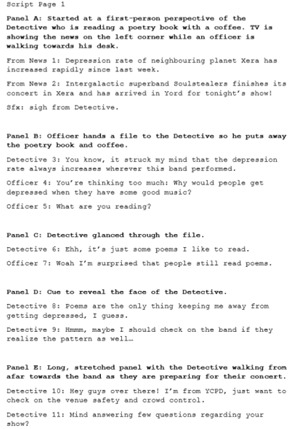

In mid-March, the class had a meeting at the studio where we got the chance to let our instructor, Phil, to check on our works. Besides approving my story, Phil commented that the formatting of my script was not very common as I named each panel by alphabetical order like the book did. Therefore, I updated the script in the correct format and started to draw the thumbnails properly. With the rundown of the story in mind, I drew the thumbnails, then updated my script on top of that. In this way, I could make sure each panel can include the right amount of information.
When visualizing the idea, I took inspiration from a newly-released Netflix sci-fi anthology – Love, Death + Robots. In one of the episodes, Good Hunting, it involves a nine-tailed fox/ “huli jing” (wicked fox lady in Chinese). The setting is in a steampunk colonial Hong Kong, which is my hometown. In the end, the fox lady infused her ancient magic with modern technology and became a robotic nine-tailed fox to hunt men. This is a perfect source for my story as it also references to the fox folktale and having charming performers revealing themselves as robots. I just thought the episode is stunning and amazing and see so much potential in my story as well.

Picture from Good Hunting in Love, Death + Robots (2019).
My classmate, Thanos, told me he would scan his hand-drawn thumbnails and edit them on Photoshop. I do not know how to edit drawn images on Photoshop. Therefore, I used the Comic Life 3 software that my professor has recommended me, to make my own framing for the panels. I printed the frames out, and drew on top of it by hand, then scanned them in again to become my final thumbnails. I have also shown my thumbnails to the MDes students, to see if they could understand my instruction through an artist’s perspective. Tony gave me some suggestions on the speech balloon placements and reading orders.
After updating the script, I have sent my work to my fellow MLitt students in the course, so we could cross-check each other’s work and exchange feedback. One of the advices from Thanos was to add a defining font for the band in the comic so to act as a branding and leaving visual hints of their robotic natures. Story-wise, they told me to add more clues, foreshadowing and explanation that the band has to consume human emotions gathered from their live performances. In terms of writing, Holly suggested me to proofread on my grammar as I sometimes describe the scene with present tense but sometimes with past tense.
After receiving feedback from my classmates, I moved on to finalizing my script. I ran through my work to Cam Kennedy when he dropped by the studio. I was so glad and relieved when he said that my story was well-presented. Encouraged by his words, I referenced the formats of my classmates and did one last amendment to the script and added the synopsis in the cover.
Looking back on the project, I am quite satisfied with what I wrote, given that this is my first time writing a comic script. When writing for each panel, I just knew how much contents to include. I realized that this could be a difficult step as my fellow classmate Holly had to cut down some exposition. I think this might be something that I am good at and should focus on improving this skill as my strength. On the other hand, character design, formatting and grammar are something that I should pay more attention to. I am grateful for Monty’s advice about the character’s motive and Holly’s help on proofreading the grammar of my writing. I wish I could have spent more time researching for comic scripts in the archive so to catch up with the script formats.
The second project in the module began as we were invited to the V&A Dundee during the second week of the semester. The class visited the V&A exhibition together and I felt like we were on a field trip which was very fun. Until we were told to make our own webcomic for the V&A website, in which they did not provide any “MLitt exception” like the scriptwriting option for the 2000AD project. I was devastated and felt helpless once again. I suggested to write an article by interviewing my class when they are producing their webcomics. Chris then suggested: “how about you make a comic on making the comics!” Phil also suggested that I can incorporate real life photos with the comics by visual editing tools. I began to ask my MDes classmates if they would be willing to help me to do some extra drawings and interviews.
A week later, the V&A Dundee staff came to listen to our ideas. My idea was to interview my classmates on making their webcomics at different stages of the project. When I told them my plan, it sounded very vague because I did not have any visual support to visualize the comic. Phil told me about a software called Comic Life which provides templates and visual aids for making a comic. The V&A staff reminded me to make the contents accessible to everyone – by explaining the context of the project and using easier phrases instead of comic jargons. After that, I tried out the programme and made the decision of making four issues of comics consisting of four panels each.
In order to give a sense of what it would look like, I mocked up two issues for the presentation. I edited my personal photos and placed them on some photos I have taken at the V&A and the DJCAD studio as the background. I wanted the photos to look like they were “drawn” so I processed them with different filters. Here are some slides I have presented:


After getting the approval and some advice for the presentation, I began to have small talks with my classmates and checking on them in the studio. I tried to take notes of who has material that is suitable for each of the issues, hence allocating them in different issues and reaching out to ask them for one piece of cartoon-style portrait of themselves. I was a bit worried if they would reject me since this means taking some of their extra time to draw and interview for me. Luckily, they were all on board and excited to see the idea comes to life.
I dropped by the studio for a week after the class is done with the 2000AD project so I could interview my classmates and took photos of their working areas. One of the difficulties for me was paraphrasing my classmates’ answers as I did not want to fill the whole panel with words without stripping away the gist of their words. I was worried about not following the unspoken rule of keeping each bubble under 25 words. However, I realized that the nature of this comic is more like a comic essay, so it makes sense to have more words.
The rest of my work was rather simple: I just had to wait for my classmates to submit their drawings to me, process their works and edited them to match the composition of each panel. I decided to unify the colour format of the comic to orange and blue which was inspired by the V&A Dundee website’s colour scheme.
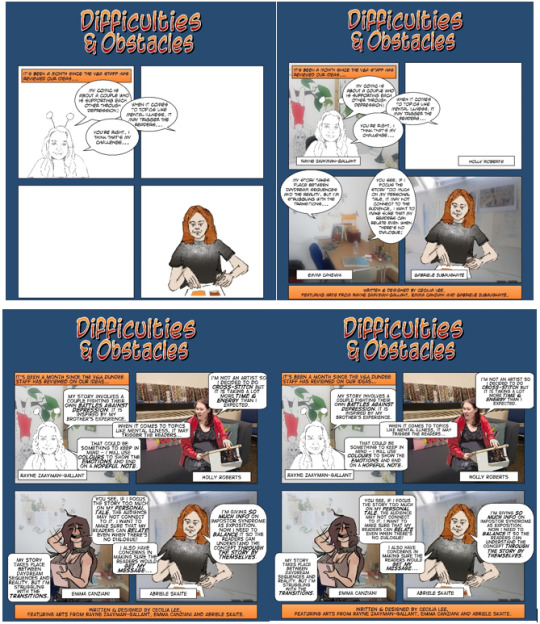
When the V&A staff came by the studio for a final checking, they told me to amend the branding by using the full title of “V&A Dundee.” Phil asked me to adjust the speech bubbles so the words would not get so close to the edges. I tried to change the shape of the bubbles from circles to squares and changed the font from “Antihero Intl BB” to “Digital Strip.” By doing so, the gaps in the bubbles were widen while not covering up too much space of the overall panels. However, during the final presentation, Phil reminded me that this issue was still very visible and told me to use Photoshop to edit the lettering properly. Rayne kindly took me to the library and showed me how to do the work as I worried that it would “squeeze” the words as I resize them. Apparently, if I hold “shift,” I could adjust the size of the words in proportion which was a very helpful tip!
While working on this project, I really tried to capture all the important bits of the process and show the readers what it is like to make a comic. I wanted to do justice for all my classmates who helped me – to let them show their efforts and brilliant ideas behind each panel and to keep my webcomic as a record for the class to remember. Collaborating with the V&A Dundee was a really big deal and would look great on my resume so I wanted to give all I can offer to this project. There were many first-times in this project and seeing my comic coming together as a whole really surprised me for how far I have come. I have learned the spirit of “never say no” and be brave to give everything a try – luckily, my classmates were kind and patient to teach me through my mistakes and instructors gave me some helpful advice along the way.
The third project is the logo design which marks my first time of using Illustrator. I did not plan to make my own brand, so I did not have anything on my mind for a logo. The only thing I had been working on for this module was the blog so I decided to make a logo for the blog – Man Man Loi. It is a Romanized English for the Cantonese words 漫慢來 with the literal meaning for each word being “comic,” “slow,” and “come” respectively. I named my blog this way to symbolize my journey through this module – taking small steps in learning new skills and progress as a comic student. The phrase can mean “take it slow” in English. I believe in the attitude of “patient work makes a fine product” which comes from a Chinese idiom. If I ever take this brand to my work in the future, I would like it to represent my attitude in working as an editor with this belief.
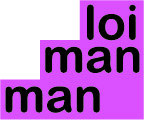



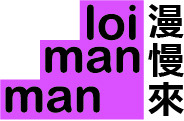
Since the phrase is related to “taking steps,” I wanted to use stairs as the shape of the logo which symbolizes stepping upwards to the goal. Since reading English text is from top left towards the right hand side, the original line up of the words would read in a descending manner which did not match the concept of stepping up. Therefore, I changed the starting point of the words from the bottom left. There were also scrapped designs of a stick figure walking up the stairs or the dot of the “i” bouncing upwards. However, they looked ridiculous with my ammeter Illustrator skills and did not really help to signal the motion of going upwards. Therefore, I decided to keep it simple and only showed the English and Chinese words on a pink staircase. For the Chinese words, I struggled between placing the words on the stairs or on one side vertically so I asked my friends and they all prefer the latter one.
All in all, I cannot believe that I have made it through this module. Every task was a new challenge that sounded so impossible for me in the first place. Everything was very over-whelming for me and I had a tough time adapting to them. I remember something Phil told the MLitt students in the beginning: “Don’t let your limitation limits you.” These words pushed me forward to accept these challenges and I have come to realize that my limitations opened new ideas for me as well. For example, if it was not for the “no MLitt exception” in the V&A Dundee project, I would not have thought of making a comic about making comics! These experiences encouraged me to try new things and not be afraid to ask for help. I kept asking my classmates along the way and they were all very nice: doing an extra drawing for me, spending time to do an interview, teaching me on how to use different programs, reviewing my works etc. I have realized that my classmates are my biggest assets and I am forever grateful for that.
0 notes
Text
Wednesday Roundup 15/6/2017
So this is a day late but in my defense I had a ridiculous amount of comics to get through with no one to blame but myself here. And you know what? I genuinely enjoyed almost everything. But does that mean every comic was good this week? And even so what did I think was the best?
Honestly I don’t know how to write these intros for people who wouldn’t be here to read my opinion anyway so let’s just jump into it.

Marvel’s All-New Wolverine, Marvel’s Amazing Spider-Man: Renew Your Vows, DC’s Detective Comics, DC’s Gotham Academy: Second Semester, DC’s Justice League of America, Image’s Motor Crush, DC’s Superwoman, IDW’s Teenage Mutant Ninja Turtles, DC’s Titans, IDW’s Transformers: Salvation, DC’s Wonder Woman
Marvel’s All-New Wolverine (2015-present) #21 Tom Taylor, Leonard Kirk, Cory Hamscher, Terry Pallot, Michael Garland
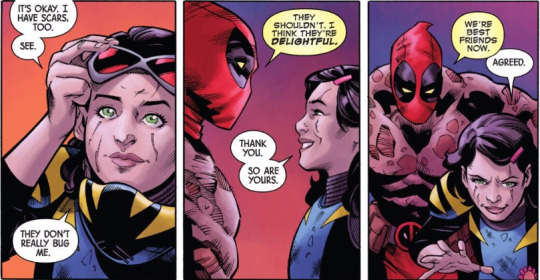
Okay I need this issue to reread a million times over because there are just so many things I love all at once. Like, oh my gosh. I was almost in tears multiple times because relationships! Healing! Supporting each other!
Wade and Gabby alone could just about make this issue perfect, but then you have Laura and Daken hugging and worried about each other, and Old Man Logan being likable for the first time in any of my readings of him. There’s so much I enjoy, though I find the cover rather deceiving. This is much more of a Howlett family reunion than anything else, though I did enjoy Riri’s parts in it.
I just eriously adore these characters and it meant a lot to see them all come together like they have here and that cliffhanger HURT so much more for it.
I will nitpick the art a bit because we’ve been doing so good about keeping Laura in the Wolverine costume which is much preferred to her X-23 wardrobes, for sure, but this issue it pretty much looked exactly like one of her old costumes without the midriffs and it was kinda weird. I know she took off a lot of her armor for skin contact but it’s... idk. It was weird.
The main thing I’m happy about though is that as we go on, I realize that literally all of the Marvel books I’ve kept are going out of their way to not involve themselves in Secret Wars and it’s kind of beautiful. Laura and Gabby are stuck on an island that’s quarantined (and I can pretend Wade’s there with them instead of whatever’s going on since I dropped Deadpool for the summer crossovers, thanks Tom Taylor!), Moon Girl and Devil Dinosaur are literally off world, and the rest are non-616. So yay me!
Marvel’s Amazing Spider-Man: Renew Your Vows (2016-present) #8 Gerry Conway, Ryan Stegman, Jesus Aburtov
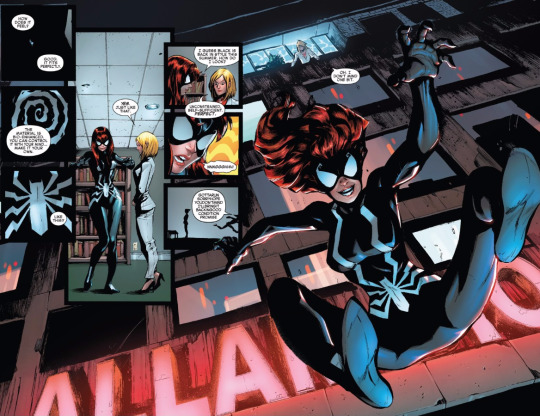
For those who don’t know, Mary Jane Watson is genuinely one of my favorite Marvel characters and is easily one of the reasons I ever stuck with the Spider-Man comics for as long as I did was because of my interest in her and wanting to see her and Peter.
I can also thank her for my genuine attraction to redheads probably.
But one of the main reasons that I’ve loved this book so much is because, as written by Gerry Conway, this is the Peter and MJ of my dreams. I love them so much, and the complications that comes from their relationship and from growing older, raising a daughter, and MJ’s desire to continuously be the glue to keep both Peter and Annie together logically causes her to seek out a way to continue being Spinerette without syphoning off Peter’s powers.
It’s almost like growing old, having a stable relationship, trying to keep things fresh while raising a kid, are all dramatic and worthy of good storytelling in their own right or something HMM.
Anyway, yes it’s completely on the nose where this is going and it’s a little curious how MJ’s not immediately aware of the connection between what’s going on with her right now and the horrible, arguably traumatizing experience she and Peter had, but who knows what’s canon anymore lol
Basically, I sideye a bit from a story point of view, but this series continues to make up for it with the real thing that matters to me: these characters and their development.
DC’s Detective Comics (2016-present) #958 James Tynion IV, Aluaro Martinez, Raul Fernandez, Brad Anderson
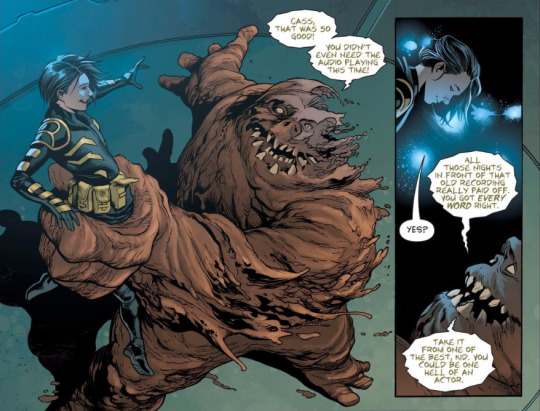
Honestly I really love the slower issues where Tynion takes more time to make moments for the relationships between the characters and give us interractions we didn’t know we wanted -- Kate going with Luke and Jean Paul to a basketball game, Cass and Clayface being adorable by reciting a play, Bruce at a poker game with a bunch of assholes in homage to Almost Got ‘im!? It was a lot of fun honestly.
...
Okay I take issue with Cass’ dialogue. I know she was repeating lines from a tape and such but it’s weird to see her make so much progress when just two issues ago she was almost monosyllabic. Like... I want to see Cass gradually learning, I want to feel her frustration with hitting walls, I want to see her struggle and achieve despite the struggle because that gradual progression was honestly something we weren’t delivered in the former canon. We have a great opportunity for it here.
But y’know. I’m particular with Cass and it’s hard to say where her baseline for reading and speech even is in this canon because her dyslexia may be in tact but her circumstances growing up are completely different. So I don’t know.
Now. I’m a sucker for Bruce and Zatanna team-ups because I’m a schmuck but I’m really excited for next issue. Had a lot of fun with this one. This feels like a decent pace for Tynion -- at least in my opinion.
DC’s Gotham Academy: Second Semester (2016-2017) #10 Brenden Fletcher, Becky Cloonan, Karl Kerschl, Adam Archer, Massyk, Sandra Hope
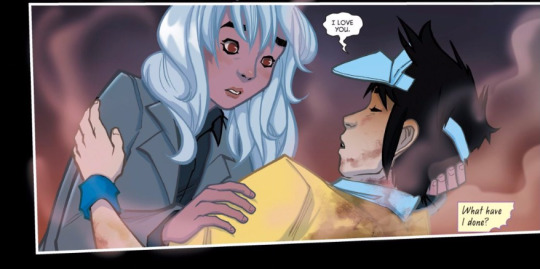
This comic is speeding toward an end and I’m not sure if I’m ready!
From the beginning, for me at least, the selling point for Gotham Academy has been just how much these kids felt like real teenagers and real friends with all their various relationships and connections, platonic or romantic or something in between. And it’s powerful to see that coming to play as an advantage to completing Olive’s arc, but also as a disadvantage since the consequences of many of her actions hurt that much more.
I’ll save a lot of my thoughts for a complete wrap up of the series but overall, very happy and very grateful for the continuously good read that is GA
DC’s Justice League of America (2016-present) Volume 1: Road to Rebirth Steve Orlando, Jody Houser, Ivan Reis, Andy MacDonald, Stephen Byrne, Jamal Campbell, Mirk Andolfo

WE GOTTA GET THE BAND BACK TOGETHER. WE’RE ON A MISSION FROM GAD.
In all seriousness, I’m a huge fan of Vixen and Ryan Choi as well as a big fan of Justice League International, as it was in its 80s glory. So my interests with this particular lineup were piqued from the beginning and I made myself wait for the first volume to dive in.
For the most part, this is a team gathering exercise. Characters that have lacked the spotlight in the last few years -- Vixen, Ray, Killer Frost, and the Atom -- were given whole issues to reintroduce them to this continuity. And honestly those issues were great. I really, really love the updated origins for them and feel that they’re a good blend of honoring the past of the characters as well as adapting them for a new world.
Lobo, Batman, and Black Canary took back seat, but considering that there were already tensions showing within the group, I think it’s safe to assume that giving the spotlight to the rest of the team won’t always last this long. Things are nothing if not explosive among these members.
I really did mean it when I said this is a team gathering exercise, because there’s no first case to unite everyone. There’s not any real antagonists or team-ups we see to speakof. It was just getting hte jLA together.
And for me it’s enough to get me intrigued, though I’d completely understand if people told me it was far from enough for them.
Now they just need to add Big Barda, Booster Gold, and Ted Kord and I’ll be satisfied.
Image’s Motor Crush (2016-present) Vol. 1 Brenden Fletcher, Cameron Stewart, Babs Tarr
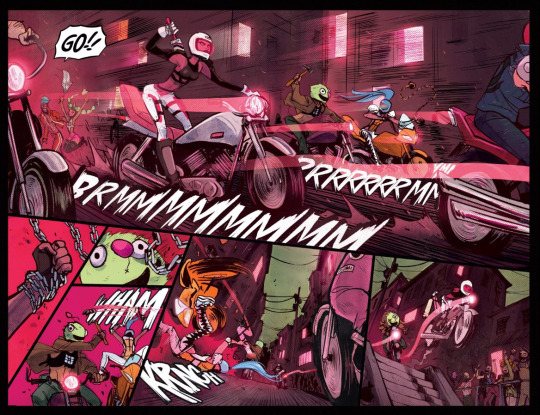
I was not the biggest fan of this team’s Batgirl team though I appreciated the aesthetics and what not. There just never seemed to be a storyline that really interested me and I couldn’t be sold on the characterization for Barbara. So I kept hearing about Motor Crush for the last year and was really itnerested in it so I wanted until this volume came out and.
Well, quite simply, I’m in love.
Tell you what, those biker gangs that kept coming up really confusingly out of place in Batgirl make a hell of a lot more sense now that I can see this team’s actual passion project.
So I love Motor Crush a lot, I’m really invested in Domino, the mystery that is her origins and the powers of Crush itself. I love her relationship with her ex, Lola, I love her father -- I love just about everything and the cliffhanger really surprised me.
I will say that while I love having a world that speaks for itself rather than constant narration, it’s a little hard to follow this world entirely, I’d like a bit more explained than what has been, but at the end of the day I’m very excited to see more.
DC’s Superwoman (2016-present) #11 K. Perkins, José Luís, Ray McCarthy, HI-FI
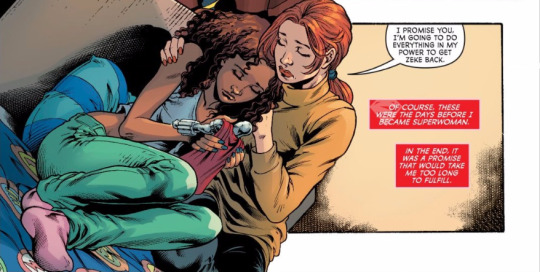
You know, I have made it clear that I’ve been worried about this title for a while now, really just hoping it was going to find its direction and wow us with the great potential that is the Super Family outside of the main Kent triad. And I feel like that’s for good reason -- the end of Jimenez’s run let a lot of people feeling justifiably scorned, there was a mishandling of a lot of heavy and important subjects that were raised, and at least the initial stuff with Perkins taking over kind of left one wondering if they had a fully formed direction to go toward next.
But I am really glad that I stuck it out for this long because the family of John, Lana, Nat, and everyone else is so important and so fundamentally different from the dynamics found elsewhere in the new familial renaissance of the DCU that I needed it. And I hope it continues to emphasize these relationships and how important they are to each other.
I’m still unhappy with how anxiety and mental illness is being handled in the title and find it lacking since it was brought up to begin with and now being ignored. That subject alone is making me rethink my disinterest in Green Lantern books as a whole because I have loved and felt inspired so far by what I’ve seen of Jessica Cruz and their handling of anxiety, and it’s why I picked up Silk at the high recommendations of a close friend.
So I’d like for mental illness to be treated better in this title -- the least it can do after bringing it up and treating it the way it did at the end of Jimenez’s run, but there’s so much value in the non-nuclear family dynamic of the Irons household and of the uniqueness of Lana’s powers and her approach to fighting crime that it’s worth it. For me anyway.
IDW’s Teenage Mutant Ninja Turtles (2011-present) #70 Kevin Eastman, Tom Waltz, Mateus Santolouco, Ronda Pattison
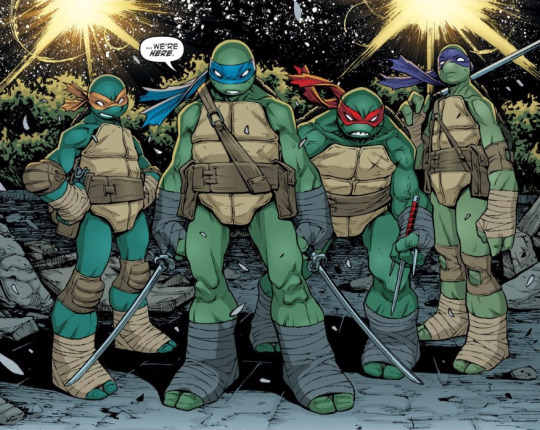
I knew the end of this storyline was going to be, at the very least, explosive but wow, WOW I had no idea how many twists and turns it was going to take in that time. That was a phenomenal ending to the Mutanimals storyline for the time being, and I just feel so bad for Slash, down to my core. I’m so worried about him, and whenever he will be allowed to recover.
At least I hope he’ll recover.
This series is seventy issues strong and i’m just so blown away by the way they still manage to keep me on the edge of my feet while so many different storylines and character developments are happening at the same time.
I mean, I even feel for Old Hobb here!
I do suppose a complaint I could hold here is that the titular turtles themselves have ultimately not been very front and center throughout this storyline, and that really showed in the conclusion, where for the most part they were lost to the colorfulness of the huge, colorful supporting cast that has been developed over the years.
For me, personally, I think that’s honestly okay. We can’t have the same story over and over again with only the main four characters driving the narrative, and it’s been a long standing tradition in TMNT for a good 30 years now to sort of embody the concept that our main guys don’t really look for situations to get involved with but sort of fall into them naturally.
Not to mention it’s probably a strength that 70 issues in, we haven’t once repeated plots or stories or put any of the characters on a loop of development to end up right back where they started. I don’t think the achievement of that can be understated, especially as we near that landmark #75!
DC’s Titans (2016-present) #12 Dan Abnett, Kenneth Rocafort, Dan Brown
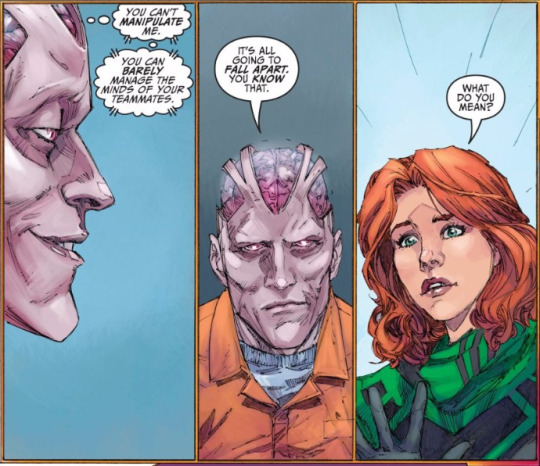
Bleh. BLEH. I was holding out judgment on the twist of Wally and Donna and Roy ending up in some kind of love triangle because I wanted the context but honestly the context is kinda... bleh. It would be awesome if we lived in some world and time where Donna’s origins were not constantly retconned and thus the source of her characterization in every run of every thing she showed up in. Which is by no means a new problem but still.
And my opinion is... Wally and Donna are both going through a hard time and Wally is having to accept that his life is fundamentally different from the previous world he knew, that he can’t just badger people into returning things to the way they were -- especially Linda, who he loves but it’s a very one-sided relationship as a result of the parallel universe paradox and stuff. It makes sense to me that in a ploy to gain some sense of control over that, he and Donna both would try to take fate in an unexpected direction, into their own hands.
But making it a love triangle with Roy just kinda keeps my eyes firmly rolled into the back of my skull.
I overall like Lilith, Dick, Garth, and Karen’s development and characterization in this issue. I think they’re taking Lilith in interesting directions and I’m really curious about what her omen means for the future, since apparently there’s a traitor among them. And they set up plenty of reasons for various members to be that traitor in this issue but I can’t help but assume already that it’s going to end up being a twist. Good twist or not remains to be seen.
IDW’s Transformers: Salvation (2017) John Barber, Livid Ramondelli
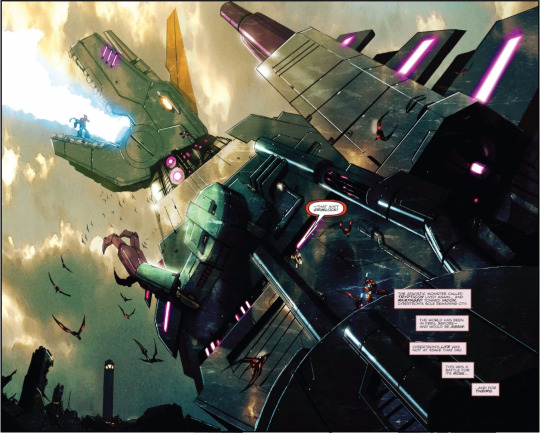
I’m going to be completely “original” here and say that I’m not a fan of Ramondelli’s at for the various Transformers comics. i know! I know. Shocking, never said before, completely going against the general fandom consensus. I’m such a brave soul. I know.
Okay, joking aside though... I didn’t think the art was bad in this one-shot. Actually! I’d argue a lot of it was even good. He may not be my favorite artist and I’ll think that his colo gradients are butt ugly most of the time, but there was better handled action sequences than usual, the characters looked like they had weight, and we even got a range of expressiveness in the characters that is... well, frankly, not usual for Ramondelli.
So other than that shocking revelation, I thought Barber performed good once more on tying the TF universe together again, answering some prior plot points and nicely knotting off loose ends. Trypticon being a Titan is not the biggest revelation in the world, but the development of Sandstorm and the Dinobots was great, and I loved just how devious Starscream truly is under Barber’s pen even though I’ve fully been enjoying the characterization for him in Till All Are One.
But the most important thing of all: SPARKLINGS. SPARKLINGS. All I’ve wanted for years is baby transformers so I am HAPPY BEYOND BELIEF. THEY’RE NO LONGER A DYING SPECIES AND THESE PRECIOUS BABIES COULD BE BORN WITHOUT EVER KNOWING THE CIVIL WAR AHHHHHHHH
DC’s Wonder Woman (2016-present) #24 Greg Rucka, Bilquis Evely, Romulo Fajardo Jr.
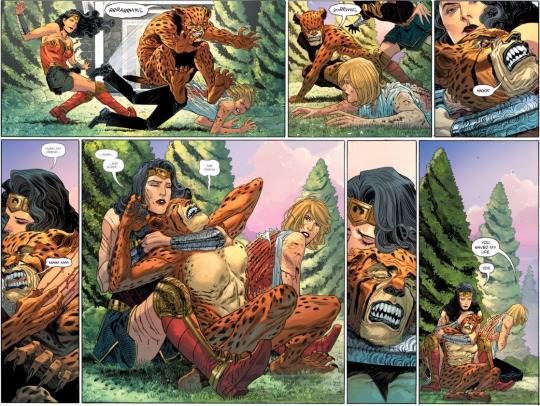
WOW! I mean, just wow! What a resolution to everything. I have so many emotions for Diana, for Barbara Ann, for even Veronica Cale of all people. Etta and Steve were great, the art was amazing.
It’s just such a relief and such... honestly just an amazing feat that Greg Rucka is beginning to wrap up this just phenomenal run of Wonder Woman
I really enjoyed how everything turned out and it was so remarkable to see Diana’s resolution to save Veronica but also to not turn her back on her friends and loved ones as well as the torment it is for Barbara to not be able to get into Themyscira after all her life’s work.
And I liked Diana’s assessment of Veronica at the end, it was true and also blunt to the point of cruelty. But fitting also.
It’s amazing what a turn around I’ve personally felt when it comes to Veronica’s character because in all honesty I was not a fan of her most of the time in the preboot, but Rucka really has fleshed her out and done something unique with her perspective now. There is tragedy but there’s also less deniability for her fault in all of it.
I’m sad to be coming toward Rucka’s end on the run, but I’m also so happy to see the love and passion he’s put into everything culminating to what it is now.
This is a genuinely hard choice but I think if I go by what tugged on my heartstrings the most, what gave me the most joy overall and just feelings unrelenting from start to finish, I would have to say that my pick of the week is All-New Wolverine. I adore this series and I couldn’t be happier with this issue and how they’re keeping my precious Marvel girls faaaaaar away from Secret Empire. A close second would be Wonder Woman but really I would happily recommend my entire pull this week. It was a geat week for comics.
But that’s just my opinion! I’d love to know your thoughts. Agree? Disagree? Think I missed something I should’ve picked up this week? I’d love to hear from you!
#Rena Roundups#SPOILERS#Wednesday Spoilers#All New Wolverine (2015 )#Amazing Spiderman: Renew Your Vows (2016 )#Teenage Mutant Ninja Turtles (2011 )#Detective Comics (2016 )#Gotham Academy: Second Semester#Justice League of America (2016 )#Superwoman (2016 )#Titans (2016 )#Wonder Woman (2016 )#Motor Crush#Transformers: Salvation
20 notes
·
View notes
Text
Five Examples of Publications
Publication no.1: EMBROIDERY FROM INDIA & PAKISTAN
2.

2a. embroidery from india & pakistan
Sheila Paine
First Published in 2001

(example of layout on page)
2b. (physical copy)
2c. What does this publication do?
embroidery from india & pakistan contains images of various textiles (such as garments, marriage dowries, household items) from India and Pakistan. Most of these items are made by women for their own family or dowry. They were documented from the British Museum’s collection. I feel that it caters for people who are wanting to know more about their culture regarding textiles and embroidery; specifically what the various textiles symbolises and conveys. It could also inspire artists or people interested in sewing. The writing is very simple and informative. It briefly explains the function or meaning of a specific textile and will accompany the images in the form of titles. The text is very concise and straightforward.
2d. Why did I choose this publication?
I love this publication because of the images. They are so detailed and beautiful that it gives me the urge to touch the page thinking the textiles are physically present. I enjoy the layout of the pages as some text will be smaller or capitalised in relation to the size or nature of the image. I also find it very informative and exciting to read about the origins of embroidery that I’ve seen my entire life.
2e. What makes this publication different?
Personally, this publication makes me feel closer to my culture purely because of its content. It inspires me to sew and embroider with more of a consciousness to its origin. I also find myself looking more closely at the Eastern attire I own after reading this book. I appreciate the size of the book as it makes it accessible to hold and easy to engage with. The paper is very glossy and is made of a stronger paper (possibly a type of cardboard). The pages do not have much of a smell to them.
Publication no. 2: ARCHIE COMICS
2.

2a. Archie’s DOUBLE DIGEST
Issue no. 105 published in 1998
(First issue published in 1941)
2b. (physical copy but here is the link to the website: http://archiecomics.com)
2c. What does this publication do?
This publication consists of comic strips based on characters situated in Riverdale (such as Archie Andrews, Betty Cooper, Veronica Lodge etc.). They are a bunch of high school students (some are rivals, friends, love interests) and the stories concentrate around specific events or challenges they encounter. I think it caters for young children as well as adults as Archie Comics has a long history behind it. Most of the text are dialogues in the form of speech bubbles. Some letters/phrases are in bold, italics or capitalised to convey effect or sound. Words such as ‘BANG’, ‘YEOW!!!’, or ‘PLOP’ conveying onomatopoeia are my favourite. The speech bubbles also change shape depending on the nature of the dialogue.
2d. Why did I choose this publication?
I love reading Archie Comics because they are so playful and easy to read. It reminds me of my childhood and I often find myself rereading them when I’m feeling stressed. The representation of masculinity and femininity within the comics are often very stereotypical and interesting to dissect. I also love the smell of the pages. I find the stories very amusing and simplified. I feel that it further enhances/draws attention the illustrations.
2e. What makes this publication different?
Physically, I love the size of them because they’re small and easy to travel with. The feel of the paper is very soft, thin and delicate. I love the expressive words such as ‘HA-CHOO!’ or ‘ACK!’. I enjoy seeing how the drawing styles of the characters has progressed throughout the years. Similar to Embroidery from India & Pakistan, I love the saturation of the colours. It makes the publication different as I feel it has had a long life of its own. The content is sometimes silly and light-hearted. Most of the issues are published every month/second month.
Publication no. 3: MATILDA
2.

2a. Matilda
Roald Dahl
First published in 1988

(example of illustration)
2b. (physical copy)
2c. What does this publication do?
Matilda is a children’s novel written by Roald Dahl about a young girl who develops superpowers. She uses them to defeat the abusive characters within the story. This novel caters for children, but I still find myself turning to it so often as it is my favourite book. The writing is very playful, witty and striking. It is accompanied by illustrations done by Quentin Blake. I particularly enjoy the words used to describe the characters as they are so effective in enabling me to imagine how a character would look like.
2d. Why did I choose this publication?
I chose this publication because of the text and images. The way Dahl writes is so crazy and hilarious. I find the illustrations exciting as they successfully compliment the text. The story is about courage, truth and it was the first novel I ever read. It has a positive message behind it that always makes me feel safe.
2e. What makes this publication different?
What makes this publication different is that it is a novel that contains a storyline with a beginning and end. It is entirely in black and white (besides for the cover) and has chapters that structure the book. Matilda is constantly being republished with new and different cover illustrations on the book. There is also the blurb at the back which stands out in comparison to the other publications. I also think the paper has a very distinct and lovely smell to it. It smells the most comforting.
Publication no. 4: DAZED & CONFUSED
2.

2a. Dazed & Confused
Fall/Winter 2018
2b. http://www.dazeddigital.com/music/article/41248/1/matangi-maya-mia-documentary-steve-loveridge-interview
2c. What does this publication do?
Dazed & Confused is a magazine that focuses around youth culture, art, fashion, history and culture. They are a platform for young artists, musicians, stylists, writers etc. to promote their individual voices. Thus, it caters mainly for the youth. I think that the magazine is generally very good regarding representation. The writing is very spunky, fresh and informative. I find the writing style very exciting as they notice subtle details/characteristics of the people/events they are writing about. The writing in the magazines are sometimes laid out through columns underneath images or on a single page in interview form.
2d. Why did I choose this publication?
I love this publication because the images are often so wild, crazy and experimental. They give me new perspectives of layout, writing and inspire me in terms of fashion and decor. The colour choices/palette the physical magazine portrays for each issue is so thought out and yummy. I prefer the physical magazine rather than the digital one because I can actually look carefully at the images and smell the glossy paper.
2e. What makes this publication different?
I enjoy the physical characteristics of the magazine. There is about 176 pages in the Dazed magazine I own but some are much thicker. Its main difference to the other publications I’ve chosen is it’s content. It will range from interviews to experimental fashion shoots. I love that the front cover of the magazine often folds out. Some of the images have a different quality to others (some are more grainy and others are softer) and the bold ‘DAZED’ font on the cover is so strong and successful. I enjoy that you can’t always see the title on the cover. There are numerous advertisements in the magazine, some of which I find quite interesting to look at. Their choice of advertisements is very particular in relation to the content of the magazine.
Publication no. 5: JIGSAW DINOSAURS
2.

2a. Jigsaw Dinosaurs
Anne Sharp
First published in 2000


(Examples of two pages opposite each other)
2b. (physical copy)
2c. What does this publication do?
This publication is a children’s book that is all about dinosaurs. Jigsaw Dinosaurs has one page with a couple of informative sentences regarding a certain dinosaur and on the opposite page is a puzzle of the relating dinosaur. It is a beginners, children’s guide to dinosaurs and it is really interactive. Thus, it caters for children (not suitable for children under 36 months). The writing is extremely simple and direct with ‘did you know’ sections and basic questions children can engage with. My favourite phrase is one regarding the Diplodocus- ‘it was longer than three buses put together!’
2d. Why did I choose this publication?
I chose this publication because I've had this book for as long as I can remember and I love dinosaurs. It blows my mind that this is a publication; you can interact and actually build puzzles within it. I am interested in the publication process/assembling of the book to accommodate the built in puzzles. I love the simplicity of the text, images and it reminds me of my childhood.
2e. What makes this publication different?
The main difference to the other publications is that it is highly interactive (and for children). My favourite aspect of it are the puzzles as it pushes my mind to what a publication can be. It is quite heavy, thick and this is probably due to the tough, cardboard cover and pages that need to support the puzzles. There are plastic sheets over each page to protect the puzzles. The font size is massive compared to the other publications (so that its easier for children to read) and there are specific borders repeated in each page which I quite enjoy. I love the simplified form of the dinosaurs that contrast the detail in other publications/illustrations, especially the straightforward timeline of dinosaurs’ existence on earth. It also has the most sentimental value to me.
0 notes
Text
Movie asks
I was tagged by @boredbyreality Thanks!
What is your…
All time favorite movie: I hate to choose one but the first one that comes to my mind is Die Welle, a brilliant German thing that should be shown in America rn I think.
Movie you’ve seen again and again: Juno. Oh my gods I love Juno.
Movie that makes you feel inspired: I’m gonna go with The Force Awakens because it inspired over 200k words worth of stories
Movie with cinematography you love: Rush. I think it’s the colours.
Movie that scares you: I think I’m gonna have to go with Die Welle here again, simply because I don’t really remember being scared scared of movies. Die Welle is disturbing and makes you ponder on human nature which is a different level of fear.
Movie that makes you cry: The Perks of Being a Wallflower. And recently, Guardians of the Galaxy 2.
Movie that comforts you: Treasure Planet. It’s a very sweet thing.
Movie you dislike: I FUCKEN HATE HARRY POTTER AND THE HALF BLOOD PRINCE. That’s my favourite book out of the series and they ruined it.
Movie you hate that everyone loves: The Fault in Our Stars. I just hate John Green okay. I’ve read enough of his books and seen movie adaptations to know I hate him with passion.
Movie you love that everyone hates: I don’t know, I tend to be more edgy with books than movies. But I unironically, truthfully love Grease with passion and I don’t know anyone else who does so.
The first movie you remember watching in theaters: Charlotte’s Web. I cried.
The last movie you watched: Guardians of the Galaxy 2
Favorite genre: is movies based on comic books a genre?
Favorite animated movie: I already said Treasure Planet, so I’m gonna go with Monster’s University
Favorite Disney movie: Lion King 2. It’s my favourite in the series although I think I must be the only one.
Favorite Movie Musical: gee I already said Grease in one of the questions, didn’t I? I also love Phantom of the Opera (2004)
Favorite horror movie: Nightmare on Elm Street (both the classic and remake)
Favorite drama: I already said Die Welle twice and I have no idea what qualifies as drama but I enjoyed Black Swan quite a bit and that sure was dramatic
Favorite comedy: Fack ju Göhte. It’s such a beautiful, hilarious comedy but it also has a deep story and I love it.
Favorite fantasy/sci-fi: Does In Time count? I love In Time.
Favorite documentary: There was a documentary on dinosaurs from BBC that I was obsessed with as a kid, it had six parts and I had it on VHS and watched it over and over. Good times.
Favorite sequel: I’m gonna go with Hunger Games: Catching Fire because that shit was really good (shame the next one couldn’t keep up)
Favorite director: I don’t know if I have a favourite director, but I do like Tarantino’s things so why not.
Favorite Actress/Actor: Daniel Brühl. He’s the cutest and was in several awesome movies I wouldn’t see without him.
A line of dialogue that’s stuck with you from any movie: Careful, Ren. Seriously, I’m trying to recall something meaningful, but all I’m getting is a line from a Czech comedy about a village football team that can’t be fully appreciated in English but I can try: “You can’t play a refined game, you’re clogs (meaning clumsy) and that’s why you’re in the lowest division.” (It’s funnier in context of the movie)
A line of dialogue you dislike from any movie: “You have your mother’s eyes” God I wish everyone would just stop reminding this poor kid that he doesn’t remember his mum.
I tag @42dicks, @space-girlfriends, @poolsidescientist, @mini-mantis @obsessions-and-dreams and @longstoryshortikilledhim if you guys are up for it :)
3 notes
·
View notes
Photo

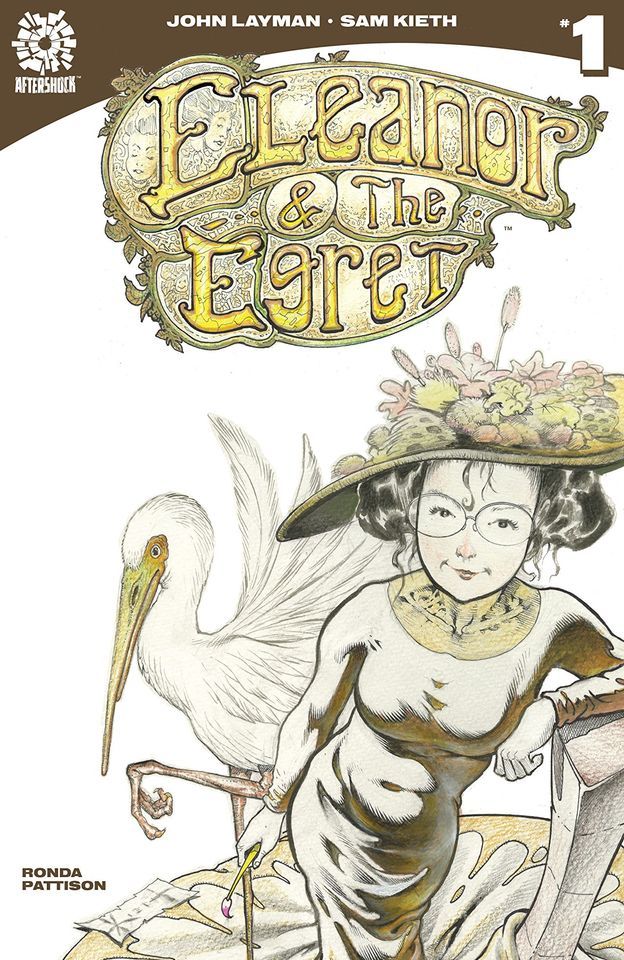




Wednesday Comics on Thursday (April 6, 2017)
It was a decent size release week for comics. Coming off a fifth week where DC gave us Hanna Barbara cross overs and Marvel handed us the fate of the X-Men and the Inhumans and not a whole lot else happened, it was nice to have a few new series and some of my favorites back in my stack. It also helps that it was a REALLY great week for comics.
Black Cloud #1 [Jason Latour, Ivan Brandon, Greg Hinkle, Matt Wilson]
There wasn’t much that was particularly live-blog worthy in this book, but it was a solid first issue, nonetheless. The story drops you into some narration about the dream world that Zelda comes from and lays out her scheme of selling access those dreams to the population of trust-fund kids that seem to make up most of the population in the city. There are some interesting dynamics at play between Zelda and the people she interacts with when she enters dream worlds. The inhabitants don’t seem to like her every much and I’m curious to see what’s going on with that. The art is solid and having Matt Wilson on colors can only ever improve a project and he’s definitely playing with some interesting elements here. I really dig Zelda’s character design and I’m loving her drop-crotch pants.
Story: 8 Art: 9 Rec? Give it another issue, then decide to drop or trade wait.
Eleanor & The Egret #1 [John Layman, Sam Kieth, Ronda Pattinson]
This book is absolutely delightful. I am a massive fan of almost everything Aftershock is putting out and Eleanor & The Egret falls perfectly in their line up of off beat, independent, books. Eleanor is an unassuming, regular person who just so happens to be a master of disguise and a master art thief. Also, her parter in crime is a talking Egret. The style of both the story and art can only be described as whimsical. The character designs and tone make it hard to place this in a specific time, which doesn’t work against it in a way that I thought it might. I’m really excited to see where this goes. More and more, Aftershock comics are becoming the books I look forward to the most every week.
Story: 9 Art: 9 Rec? Absolutely
Extremity #2 [Daniel Warren Johnson, Mike Spicer]
I don’t think I have any buttons left unpushed by this book. War in a sci-fi landscape, a fallen family, sibling drama, warrior girl and her family seeking revenge, big ass dinosaur monsters with a bunch of eyes, and a very soft boy with daddy issues and a brand new (slightly used?) robot friend named Shiloh. There’s nothing really worthwhile to say about this book because you should just read it. The art is beautiful, the story is compelling as hell, and I can’t wait to see what happens with all these characters. There are so many pieces already in play. It was just announced that this and the first issue are getting second and third printings respectively, so if you haven’t already, absolutely pick these up.
Story 10 Art 10 Rec? 100%
Paper Girls #13 [Brian K. Vaughn, Cliff Chang, Matt Wilson]
If you’re not already reading Paper Girls, then I don’t really know what to tell you except that you’re really missing out. While this isn’t the best place to jump on at all, the first two arcs have been collected in trade already. This is one of my default recommendations at work to people who come in looking for something new. Brian K. Vaughn has always impressed me with his ability to write believable teenagers, going all the way back to his Runaways days. As much as I love Saga, Paper Girls gives him a broader avenue to stretch that particular talent and I’m always excited to see that. While the girls are still split up somewhere in the distant past, Mac makes a discovery about the Hockey Stick they found in the future and KJ learns some interesting things about the future. There’s a panel towards the end that I’ve already posted that I kinda lost my shit over.
Story 9 Art 10 Rec? Stop what you’re doing right now and read this series.
Rock Candy Mountain #1[Kyle Starks]
This is a pure action comic with lots of homo-fighting and clever dialogue. While Jackson is in search of a mountain from a folk song, it looks like the literal devil is in search of Jackson in this post WWII homage to action movies and hobos. I might be completely wrong, but I think this is the first ongoing series for Kyle Starks? If I’m not wrong, then previous work with Image has been released in Graphic Novel form. If you’re a fan of any of his previous work, this book is not at all a departure from that. It falls right in line with Sexcastle in the ways in which it plays with genre conventions. I wish I had been able to find a digital copy floating around in the internet without paying for it a second time, because there are some truly fantastic panels in it, including the use of “bitch” as a sound effect.
Story 8 Art 9 Rec? “He’s got punch diarrhea and their faces are the toilet bowl.”
Shade the Changing Girl #7 [Cecil Castellucci, Marguerite Sauvage, Kelly Fitzpatrick, Dan Parent (back up)]
Saved the best book for last. Shade has become my favorite book over the last few months, it is weird and gorgeous in all the right places. Marguerite Sauvage was a flawless choice of fill in artist for this stand alone issue that establishes a lot of the background information on Loma--an alien from Meta who is considerably different from the original Metan, humanoid Roc Shade. This book also establishes a WHOLE BUNCH of delightfully canon queerness. Loma, a female identified alien bird, is shown laying on top of a self-identified “Meta Girl” and River is canonically bi. Not to mention the fact that Teacup mention’s having two mothers multiple times over the course of the issue. Sauvage kills it. Her style maintains the dreamlike quality of the book while adding her own identifiable style to the book.
Story 10 Art 10 Rec? Buy it immediately!
Not-So-Honorable Mentions:
Royals #1-- I am so curious about where Al Ewing is going to take the Inhumans coming out of IvX but man I wish Marvel would stop paring him with such bad artists. Meyer’s almost-but-not-really-manga style made this book impossible to read. I felt the same way about New Avengers, a book that starred several of my favorite characters. Jagged hair and small faces with disproportionate eyes are not typical aesthetic markers for superhero comics and they don’t work well at all. Marvel wants me to care about Inhumans and I am more than willing to give them a shot but I can’t with this art.
Still to read:
X-Men Gold #1-- I want to catch up on X-Men comics and IvX before I dive into this one, even though I now I probably don’t need to. Expect this one to be blogged about later. I have been letting myself become cautiously more excited about the X-Line as ResurrXion takes shape and now I’m at a point where if it’s bad, it will hurt my feelings. I don’t want to have my feelings hurt, so I’m putting it off.
3 notes
·
View notes
Text
Kong: Skull Island

Directed by Jordan Vogt-Roberts, Kong: Skull Island is his chance at a Vietnam War. In his sophomore feature, Vogt-Roberts seems to have some self-recognition that he will never get to direct a Vietnam War film. This is not a shot at him, as he is certainly a promising young director with both this and his debut Kings of Summer standing as solid starts that show he is capable of handling both small intimate films and huge films of epic proportions. While neither are particularly great, they are both capable films nonetheless. In this film, he takes his chance to add as much Vietnam imagery as possible by setting the film in 1973 and also tossing in some Cold War paranoia for good measure in this story of a group of people wandering the jungles on a mission, encountering a remote tribe, and facing a being that the tribe sees as a god. Did Francis Ford Coppola not make this film, sans the big monkey, in 1979?
Wearing this Apocalypse Now influence on its sleeve, Vogt-Roberts shows a love of both gratuitous shots of helicopters flying into the island or of the smell of napalm in the morning when Preston Packard (Samuel L. Jackson) tries to dump napalm on Kong. Yet, as with all Kong films, it must run through the beats of the story. Fortunately, Vogt-Roberts improves upon Peter Jackson's recent rendition. By chopping off an hour, the film is not so dreadfully long, which is really a major benefit. Give me the dinosaurs, but not for too long. Give me some backstory, but not extended scenes in a boat and trying to get funding for the trip. This latest edition streamlines it, yet still has the time to get into very compelling mythology regarding Skull Island and the nature of Kong as well as the other beasts that call Skull Island home. Additionally, some of the more unsavory elements of Jackson's films included its depiction of the natives of Skull Island. Depicting them as horrible savages out to kill white people, Jackson's film indulges in nasty stereotypes that create a truly captivating opening scene in that film, but that hardly justifies the racism. With Skull Island, Vogt-Roberts dispatches of this nastiness and instead has a smart and respected tribe in the center of Skull Island. Playing host to WWII veteran Hank Marlow (John C. Reilly) for 28 years, these are no savages and Vogt-Roberts never pretends they are. Instead, the tribe is given its due respect throughout the film. This latest film also ditches the racist undertones of past Kong films. From the original to various remakes, critics have shown the parallel between King Kong being an ape (as black people have often been derogatorily been referred to as "monkeys") and the white/blonde damsel in distress that he clutches in his hand. To critics, it has been a parallel between the perceived assault on the white race by black America. Now, whether or not you buy that or not, I did once have a film professor who claimed that it was why no studio could have an American direct King Kong again, as that parallel had been made. She was not entirely wrong, even if Vogt-Roberts is American as Brie Larson is never a damsel in distress or screeching in his paw, which Naomi Watts did often in 2005. Instead, he holds her once and it is to save her. By then, she had already established that he was not an enemy and was passed out anyways, so no concerns there from her. Of all of its updates, ditching the possible racist undertones is certainly a major plus, regardless of whether you buy into that angle or not.

However, Vogt-Roberts' influences also come via the heavily 70s soundtrack, references, and the political situation at the time. Fortunately, it does actually have a lot to do with the plot. As the Cold War is burning brightly and the Americans are coming off a loss in Vietnam, the whole country needs a win. This mission to Skull Island is that win. Finding new species' or a new island would re-establish America as the top dog in the world and, as such, is a major effort even if it takes some convincing. Yet, what the film does very well with its 1970s post-Vietnam setting is to show the men trying to regroup and go back to war, even if it is a different kind of war. The men are resistant and constantly thinking home. From writing letters, discussing home, or making references to what they will do once they get there, the men form a common bond of trying to make the best of the situation. Yet, on the flip side men such as Packard or James Conrad (Tom Hiddleston) need this war. Even photographer Mason Weaver (Brie Larson) needs the war, though she is anti-war. The three of them have nothing left to do after the end of the Vietnam War and the Skull Island job represents another opportunity to feel useful in the world at a time when opportunities were scarce.
That said, in spite of all of the updates and the post-war themes at play here in the sea of disillusionment that was the post-war 1970s, Kong: Skull Island is a King Kong film. Fighting the god of Skull Island and facing off with the various monsters that also call it home, we get to see Kong rip apart a giant squid and exact revenge on the skullcrawler that killed his family. This is definitively one of those films that shows Kong as a tragic figure with him serving as the protector of the tribe that calls the island home, as well as the benevolent animals that exist there. Defending them against the skullcrawlers, Kong is a lonely and incredibly sad figure. Juxtaposing his sheer size with how small and lonely he has become after having his entire family killed, we get a pretty solemn take on the giant ape that makes the attacks lodged against him by the military even harder to watch. In terms of the action, however, Vogt-Roberts stages every scene with Kong incredibly well and really makes them pack a punch throughout. Yet, the peak of this film comes with the skullcrawlers surrounding the human characters in the mass grave of Kong's family. With nothing but the clicking of a camera inside the skullcrawler to let them know where it is while lost in a sea of bones and a cloud of smoke, the scene is terrifically captured and easily the most tense moment of the film. Though the opening in Skull Island with Kong knocking helicopters out of the sky is similarly tense, we know that only the nameless characters played by actors we have never seen before will die. In the skullcrawler scene, the film has already developed a willingness to kill its cast and is unafraid to indulge in this throughout. As such, this sequence keeps the audience on edge and fully alert, as it is how unpredictable as to who will be wiped out next.

In terms of its special effects, Kong: Skull Island is a truly beautiful film. With lots of smoke and light effects to create a smoky scene in Skull Island, as well as an excellent ring of thunderstorms around the island, every effect is done terrifically well and always delivers the goods. The creature design is excellent and really hits the nail on the head with a realistic looking Kong and fun takes on various dinosaurs or unique creatures. Taking influence from a variety of sources on this front, the creature design here is what really makes it so much fun to watch. Seeing new or unique animals not only makes the land feel more foreign, but also adds a sense of adventure to this monster movie. Every scene feels fresh and adventurous, due to the fact that anything could be lurking around the corner. Its skills and traits are unknown and whether or not it eats humans is even more questionable. Whatever is awaiting the cast, however, is something that inspires awe and will likely have them clutching their guns.
However, as with all modern blockbusters, Kong: Skull Island is simply a palatable take on the story. Though I prefer it to Peter Jackson's elongated 2005 take on the story, the film is hardly unique. While it is a stunning film with excellent cinematography, the film still falls into the trap of ruining tense moments with comic relief and having action that looks cool, but lacks weight or substance. The cinematography really helps the action earn some substance as it feels like Vogt-Roberts staged many scenes just to have an excuse to silhouette Kong against the backdrop of fire or have a gorgeous shot of the landscape of Skull Island. Unfortunately, scenes that do not have this feel hollow and straight forward. Though I love the giant squid scene because it is cool, it is a culprit of being nothing but hollow action. We already know Kong is big and strong. Showing him rip apart a squid hardly furthers this feeling. The writing in the film is also incredibly clunky with many scenes of dialogue either forcing in another reference, bad joke, or just coming off awkwardly. This translates into lackluster performances from Jason Mitchell and Thomas Mann, who receive the vast majority of the bad lines. That said, nobody really has excellent dialogue and character development is, naturally at a minimum. For those that would like some substance with their monster movies, Kong: Skull Island does not deliver there and it only further exacerbates its issue with feeling hollow.

Kong: Skull Island, in spite of its issues with hollow action and lackluster writing, is still a terrifically entertaining piece of popcorn entertainment. Wearing its influences on its sleeves and ditching some of the more unsavory elements of past King Kong films and replacing it with a look at post-war time for soldiers, mercenaries, and photographers amidst this sea of disillusionment and the rise of rock and roll, Kong: Skull Island often feels like a time capsule. For a man born in 1984, Jordan Vogt-Roberts does an excellent job providing great 1970s nostalgia and capturing the feeling of America as Vietnam War ended and the Cold War raged onward. Thus, while it has issues with excessive comic relief, hollow action, and bad characters like every other modern blockbuster, Kong: Skull Island makes up for it with that thematic substance. Above all, however, the film is absolutely visually stunning and, even where all else fails, this film is damn pretty. Fun, dumb, and gorgeous, Kong: Skull Island is the hot blonde of films. Though I am pretty sure it has nothing under the hood, it is just pretty enough to keep me distracted with a light and off-the-cuff personality that really keeps you running and guessing as to what is next. While perhaps not the key to a lasting relationship, it does translate well into being a quality blockbuster.
#kong: skull island#2017 movies#2010s movies#film reviews#film analysis#jordan vogt-roberts#john goodman#samuel l. jackson#tom hiddleston#brie larson#thomas mann#corey hawkins#jian tian#jason mitchell#john c. reilly#toby kebbell
1 note
·
View note
Text
5 Short Films to Use in the ESL Classroom
I like to start all my classes with a short film, a documentary, or even a news clip to give students the opportunity to work on their listening skills. This routine helps them switch their brains to English and gets them ready for the lessons of the day. I also use films as discussion starters, as support for vocabulary building or as a springboard to study broader subjects. I think it’s great that my students get to listen to different accents and expressions. It makes them bolder learners.
There are so many ways to include short films in the language classroom. If you’re ready to take the plunge, here are five short films that are great tools for learning in a second-language context.
Beginners of all ages / very young learners
At Home with Mrs. Hen
oehttps://http://bit.ly/2VQZy9f
This animated short film features beautiful images with soft pastel colours. Mrs. Hen has two young children, one of whom has temper tantrums. She does her best to raise the children by herself. Because there’s no dialogue in the film, it’s suitable for ESL students of all ages. I’ve created an activity in which students demonstrate their understanding of the plot while building their vocabulary. After the first viewing, we create a list of words that are needed to talk about the film. The next step is to describe what happens in the film. Another activity focuses on feelings by matching words to the corresponding character. The final component is to imagine what happens next to this family (in story, diary, comic strip, vlog or song format).
Elementary school
How Dinosaurs Learned to Fly
oehttps://http://bit.ly/2S6A3BP
This fun depiction of how dinosaurs may have evolved and not become extinct is hilarious. The film is perfect for a fill-in-the-blanks activity, since the pace is not too fast and it’s easy to follow the plot. I give students the script of the film to follow along. They practice pronunciation and record their own version of the voice-over. Students then discuss the validity of the hypothesis presented and come up with other creative or extravagant answers to explain what happened to the dinosaurs. The end product is a seminar where “experts” present their theories to fellow scientists.
I Want a Dog
oehttps://http://bit.ly/2VQZyWN
This film introduces a character who knows what she wants and perseveres to reach her goal. She’s willing to pretend she has a dog to prove her point that she’s ready to own a pet. This is a good starting point to talk about personality traits and to teach adjectives (adjective word order, compound adjectives, comparatives and superlatives). Students create posters presenting a desire they have and examples of what they’re willing to do to demonstrate how serious they are about it. They add pictures of themselves and a personal description with adjectives.
Middle school
Harry Jerome: The Fastest Man on Earth
oehttps://http://bit.ly/2Di5eBH
This short film introduces the audience to a Canadian hero who overcame racism in the 1960s. It includes original footage of Harry Jerome himself combined with recently filmed commentary from teenagers. Students draw a timeline of the major events of Jerome’s life or write a short biography outlining why he’s a Canadian hero. They research other Canadian heroes and create a wall of heroes with pictures of the different people selected and their biographies. This becomes part of a unit on heroes, famous and unsung, or even on the everyday heroes around us. Students do a survey among themselves to identify people they consider to be heroes in their community. They write texts to praise and celebrate them (poem, thank-you letter, rap, speech, eulogy).
High school / adult learners
Flawed
oehttps://www.nfb.ca/film/flawed/
Flawed is a beautiful time-lapse short film about accepting one’s uniqueness. The narrator falls in love with a surgeon and starts a long-distance relationship based on postcards. When he tells her he operated on a young boy’s ears, she’s brought back to her own childhood and her struggle to accept her difference and learn to value it. I use the film to initiate debates about plastic surgery in our society or about standards of beauty and their impact on young people. The bonus short on the making of Flawed offers an interesting way of teaching students how to do time-lapse animation. They can create short films to present their arguments for or against the issues before holding debates.
I hope teachers will be inspired to use short films in their classrooms. I believe they have many benefits. They provide authentic material and are often less overwhelming than texts to some learners. I believe they’re useful even when teaching little ones who can’t yet read. No matter what level you teach, it’s worth a try.
Marilyne Bedard teaches ESL in high school in Quebec City. In the 16 years she’s been a teacher, she has taught English and French at all levels, from preschool to university. She enjoys creating learning units that combine different kinds of subject matter. Her interests range from history to YA novels, short films, documentaries, and playing board games with her family.
Discover more Educational blog posts | Subscribe to the NFB Education Newsletter | Follow NFB Education on Facebook | Follow NFB Education on Twitter | Follow NFB Education on Pinterest
The post 5 Short Films to Use in the ESL Classroom appeared first on NFB Blog.
5 Short Films to Use in the ESL Classroom posted first on http://film-streamingsweb.blogspot.com
0 notes
Text
Animated cartoon
New Post has been published on https://hisour.com/art/animated-cartoon/
Animated cartoon

An animated cartoon is a film for the cinema, television or computer screen, which is made using sequential drawings, as opposed to animations in general, which include films made using clay, puppet and other means. Animated cartoons are still created for commercial, educational, and personal purposes. Often, the toons receive unusual objects, and the pitfalls that the characters tend to each other often end in a comic fall, thanks to many reversals of situation. It is usually short films, using irony, exaggeration, caricature and especially imagination. Cartoons always favors humor, generally do not give much importance to the characters' lives: only the moment of the action and the elements count leading to the end of the gag. As for the graphic style and the animation: very important deformations of the characters (stretching, big eyes, four fingers, technique of squash and stretch). This particularity of the characters is crucial in the scenarios, because it makes it possible to make live with these all sorts of illogical and funny situations. As for the scenario: the exaggeration of the situations and emotions expressed by the characters, the violence of these which are never dramatized: the characters are often resurrected after suffering situations that would have led to their death in normal times ; unlike the Disney style, which sometimes turns to tragedy (fairy tales, death of the mother of Bambi). History: Early examples of attempts to capture the phenomenon of motion into a still drawing can be found in paleolithic cave paintings, where animals are often depicted with multiple legs in superimposed positions, clearly attempting to convey the perception of motion. The phenakistoscope (1832), zoetrope (1834) and praxinoscope (1877), as well as the common flip book, were early animation devices to produce movement from sequential drawings using technological means, but did not develop further until the advent of motion picture film. The first animated projection (screening) was created in France, by Charles-Émile Reynaud, who was a French science teacher. Reynaud created the Praxinoscope in 1877 and the Théâtre Optique in December 1888. On 28 October 1892, he projected the first animation in public, Pauvre Pierrot, at the Musée Grévin in Paris. This film is also notable as the first known instance of film perforations being used. His films were not photographed, but drawn directly onto the transparent strip. In 1900, more than 500,000 people had attended these screenings. The first (photographed) animated projection was Humorous Phases of Funny Faces (1906) by newspaper cartoonist J. Stuart Blackton, one of the co-founders of the Vitagraph Company arrived. In the film, a cartoonist's line drawings of two faces were 'animated' (or came to life) on a blackboard. The two faces smiled and winked, and the cigar-smoking man blew smoke in the lady's face; also, a circus clown led a small dog to jump through a hoop. The first animated projection in the traditional sense (i.e., on motion picture film) was Fantasmagorie by the French director Émile Cohl in 1908. This was followed by two more films, Le Cauchemar du fantoche [The Puppet's Nightmare,, now lost] and Un Drame chez les fantoches [A Puppet Drama, called The Love Affair in Toyland for American release and Mystical Love-Making for British release], all completed in 1908. One of the very first successful animated cartoons was Gertie the Dinosaur (1914) by Winsor McCay. It is considered the first example of true character animation. At first, animated cartoons were black-and-white and silent. Felix the Cat and Oswald the Lucky Rabbit are notable examples. From the 1920s to 1960s, theatrical cartoons were produced in huge numbers, and usually shown before a feature film in a movie theater. Disney (distributed by Pat Powers, then Columbia, then United Artists, then RKO, then independently), Fleischer (distributed by Paramount), Warner Bros., MGM, and UPA (distributed by Columbia) were the largest studios producing these 5- to 10-minute "shorts." Other studios included Walter Lantz (distributed by Universal), DePatie-Freleng (distributed by United Artists), Charles Mintz Studios (later Screen Gems) (distributed by Columbia), Famous Studios (distributed by Paramount), and Terrytoons (distributed by 20th Century Fox). The first cartoon to use a soundtrack was in 1926 with Max Fleischer's My Old Kentucky Home. However the Fleischers used a De Forest sound system and the sound was not completely synchronized with the film. Walt Disney's 1928 cartoon Steamboat Willie starring Mickey Mouse was the first to use a click track during the recording session, which produced better synchronism. "Mickey Mousing" became a term for any movie action (animated or live action) that was perfectly synchronized with music. The music used is original most of the time, but musical quotation is often employed. Animated characters usually performed the action in "loops," i.e., drawings were repeated over and over. Although other producers had made films earlier using 2-strip color, Disney produced the first cartoon in 3-strip Technicolor, Flowers and Trees, in 1932. Technicians at the Fleischer studio invented rotoscoping, in which animators trace live action in order to make animation look more realistic. However, rotoscoping made the animation look stiff and the technique was later used more for studying human and animal movement, rather than directly tracing and copying filmed movements. Later, other movie technologies were adapted for use in animation, such as multiplane cameras with The Old Mill (1937), stereophonic sound in Fantasia (1940), widescreen processes with the feature-length Lady and the Tramp (1955), and even 3D with Lumber Jack-Rabbit. Today, traditional animation uses traditional methods, but is aided by computers in certain areas. This gives the animator new tools not available that could not be achieved using old techniques. Productive process: Pre-production Idea A text of very few lines describing the characters, the setting and the time in which a short film takes place. Subject Tale that tells the story of the short film; presents the characters and describes the setting. Film script Text divided into scenes (ie the scenes of the short) where you describe what happens, what the characters say etc. The realization of an animated drawing, as well as a film, foresees the drafting of the storyboard as a first step, to translate the text of the script into drawings. The storyboard is very similar to the draft of a comic book, but without clouds; the dialogues, if any, are placed under the scene, along with the annotations, while the drawing is rough, full of unsolved traits, and this is because the drawings are many, but above all it does not have to be beautiful in itself, but to show the shots in the best way. The storyboard is progressively modified, up to the final version, with the comparison of the team of artists with the director; for example, the painters of the backgrounds must know where to paint and where instead leave white spaces reserved for the characters. In advertising the storyboard is used to submit a commercial spot to the customer before filming it. Unlike storyboards for film scripts, these are more detailed and carefully colored, as they are already a presentation to the customer. This compendium made of drawings and annotations is then refined with the team that will work on the recording, ie actors and screenwriters. Executive production Incision of the entries Before starting the animation work it is used to record a preliminary audio track, which will serve as a guide to the animators. This track contains only the voices, useful to the animators to adjust with the quantity of the drawings. The complete audio track will include voiceovers, sound effects and music, but will only be performed in the post-production phase. videoboard Step after the storyboard and the recording of the voices; it consists of a montage realized using the vignettes of the storyboard and the voices of the preliminary audio track. Animatic or Leica Reel Before approving the storyboard definitively, a very approximate animation is realized, made up mainly of fixed drawings, with short and poorly articulated movements, and framing changes. This realization is known as Animatic and is the last verification of the validity of the storyboard. Another equivalent name, today less used, is leica reel; it derives from the fact that in the past there was a wide use of Leica products in cinematography. Background The background in the traditional cartoon was painted on a white sheet, where in the case, it also includes parts of the characters. Drawing, Animation and Timing The timing is literally the measurement of the times of the various scenes, fundamental to establish the correct quantity of drawings for each sequence. The drawings are made using different methods: from the first cartoons in frame by frame, including both subject and background; use of the rodovetro, transparent acetate sheet, which allows to redraw only the moving characters and leaving the backgrounds fixed; until today, when the drawings are made on sheets of light, semi-transparent paper, to be then scanned and assembled by means of the electronic computer. The animator draws the frames in succession to give the characters the movement once the frames are quickly mounted one after the other. The drawings are already made in such a way as to blend into the background with shadows and subtractions. Layout In ancient times to lay out the individual frames the sheets of rodovetro, with the characters drawn above, were placed in a frame together with the background, illuminated and impressed in the film one by one. More modernly the characters and backgrounds are scanned, made digital and combined to form the computer short. Post production Assembly and correction The scenes created in this way are assembled together to compose the final result. In modern productions it is also possible to adjust small errors or to make color-correction, or to even out the colors of the various scenes, correcting it digitally Dubbing, sound effects and music The dubbing, as already written, is recorded before drawing the cartoon. Dubbing is usually recorded in a carefully sound-proofed recording room, where the voice actors are present, by themselves, with the written lines and, on the screen, the animations completed and assembled, in order to follow the characters' lips. Then when the dubbing includes more than one person you make sure to put them together, to get along with the times. The dubbing is very important in a cartoon, given the absence of actors and the presence of characters without their own voice. Finally, sound effects and music are added, also made with screen animations. Television: Competition from television drew audiences away from movie theaters in the late 1950s, and the theatrical cartoon began its decline. Today, animated cartoons for American audiences are produced mostly for television. American television animation of the 1950s featured quite limited animation styles, highlighted by the work of Jay Ward on Crusader Rabbit. Chuck Jones coined the term "illustrated radio" to refer to the shoddy style of most television cartoons that depended more on their soundtracks than visuals. Other notable 1950s programs include UPA's Gerald McBoing Boing, Hanna-Barbera's Huckleberry Hound and Quick Draw McGraw, and rebroadcast of many classic theatrical cartoons from Universal's Walter Lantz, Warner Bros., MGM, and Disney. The Hanna-Barbera cartoon, The Flintstones, was the first successful primetime animated series in the United States, running from 1960 to 1966 (and in reruns since). While many networks followed the show's success by scheduling other cartoons in the early 1960s, including Scooby-Doo, Where Are You!, The Jetsons, Top Cat, and The Alvin Show, none of these programs survived more than a year (save Scooby-Doo, which, despite not being a primetime cartoon, has managed to stay afloat for over four decades). However, networks found success by running these shows as Saturday morning cartoons, reaching smaller audiences with more demographic unity among children. Television animation for children flourished on Saturday morning, on cable channels like Nickelodeon, Disney Channel/Disney XD and Cartoon Network, PBS Kids, and in syndicated afternoon timeslots. The scheduling constraints of the TV animation process, notably issues of resource management, led to the development of various techniques known now as limited animation. Full-frame animation ("on ones") became rare in its use outside of theatrical productions in the United States. Primetime cartoons for mature audiences were virtually non-existent in the mainstream of the United States until the 1990s hit, when The Simpsons ushered in a new era of adult animation. Now, "adult animation" programs, such as Aeon Flux, Beavis and Butt-head, South Park, Family Guy, The Cleveland Show, American Dad!, Bob's Burgers, Aqua Teen Hunger Force (currently known as Aqua TV Show Show), and Futurama have increased the number of animated sitcoms on prime-time and evening American television. In addition, animated works from other countries (notably Japan) have had varying levels of airplay in the United States since the 1960s. Commercial animation: Animation has been very popular in television commercials, both due to its graphic appeal, and the humour it can provide. Some animated characters in commercials have survived for decades, such as Snap, Crackle and Pop in advertisements for Kellogg's cereals. In 1957, "Louie the Fly" made his first appearance on Australian TV as the cartoon antagonist for Mortein, an Australian brand of household insecticide and was drawn and animated by Geoffry Morgan Pike. In a jingle created by Bryce Courtenay, it has been used in animated TV commercials since 1962, he proudly sings of his own dirtiness, claiming to be afraid of no-one except "the man with the can of Mortein." The legendary animation director Tex Avery was the producer of the first Raid "Kills Bugs Dead" commercials in 1966, which were very successful for the company. The concept has been used in many countries since.
0 notes
Text
Top 10 Movies of 2016
Another year has passed and another Top 10 movie list must follow. I found this year to be a tad weaker than 2015, with many of my picks for this list not coming to theaters until November or December. This year started to show, quality wise at least, the blockbuster fatigue that constant releases in expanded universes (superheroes, especially) can evoke. Fortunately, once I narrowed down my list along with a few honorable mentions, it became very difficult to put them in order, which is usually a sign of some great films. I believe that every movie listed here will be a great addition to one of your movie night queues. So, without further ado...
Honorable Mentions
Deadpool

Superhero movies have flooded our theaters to the point that we’ll soon be getting over half a dozen in a single year. This year they ranged from the painfully mediocre (Batman v. Superman, Doctor Strange) to just bad (Suicide Squad). Deadpool was a nice breath of fresh air as Ryan Reynolds brought the much loved Merc with a Mouth to the screen. Deadpool is funny, lampooning everything from the superhero genre as a whole to the questionable decisions made regarding both previous appearances of Deadpool and the career of Reynolds himself. If only all comic book movies could be this faithful to the spirit of the character.
Rogue One: A Star Wars Story
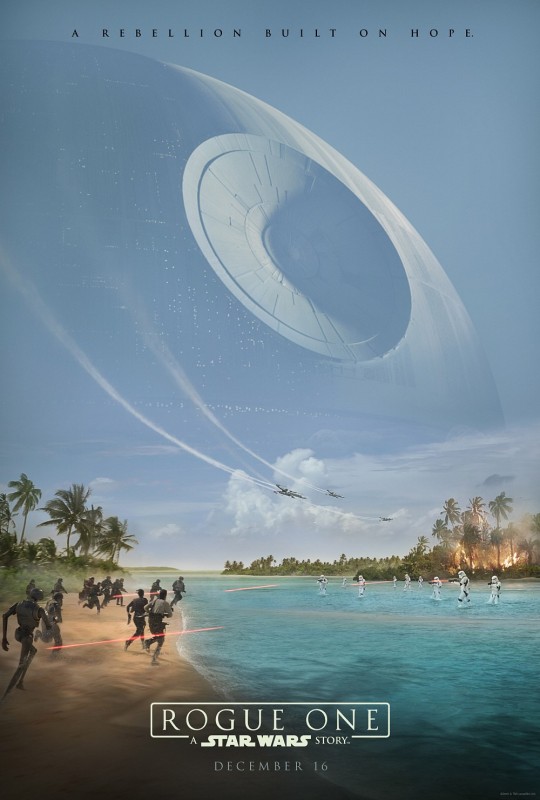
Another year, another Star Wars movie. This installment was a landmark film for the franchise in that it was the first major release not to focus on the main narrative following the Skywalker family. Instead, we were given the story of how Princess Leia ended up with the Death Star plans she had at the beginning of A New Hope. We get a look at a different side of the universe not particularly focused on magic space wizards but instead on real people fighting the threat of the Empire. Felicity Jones leads a great cast in a solid movie that has one of the best third acts of the franchise. Alan Tudyk stands out as a reprogrammed Imperial droid that is loyal to the Rebellion but throws shade like no other. While not all characters were developed fully, in the end, Rogue One stands as the best blockbuster of 2016.
The Top Ten
10. Manchester by the Sea
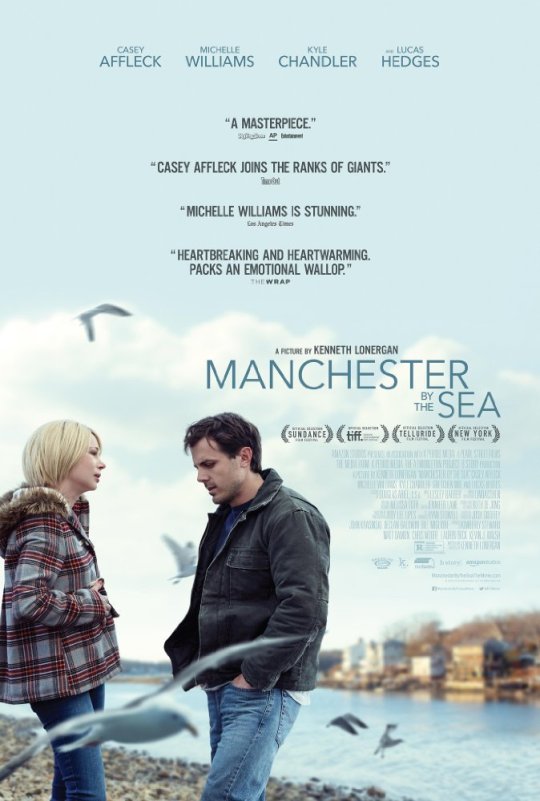
Grief is often the hardest thing to sell on screen, so making such a deep theme the focus of your movie is a bit of a risk. However, Kenneth Lonergan deftly writes and directs a unique view of grief for a unique family dynamic. Casey Affleck plays Lee Chandler, a handyman who resides in Boston away from his home of Manchester following a family tragedy. The death of his brother brings him home where he discovers that he is now the guardian of his nephew Patrick, played by Lucas Hedges. The film follows both of the men as they deal with death and all of the complications that come from it. However, their story is both painful and funny, as the movie makes for several reactions that seem all too real to those of us that have lost someone close. While the ending leaves several elements uncertain, Affleck and Hedges give strong performances that give us one of the truest depictions of loss ever set to film.
9. Pete’s Dragon
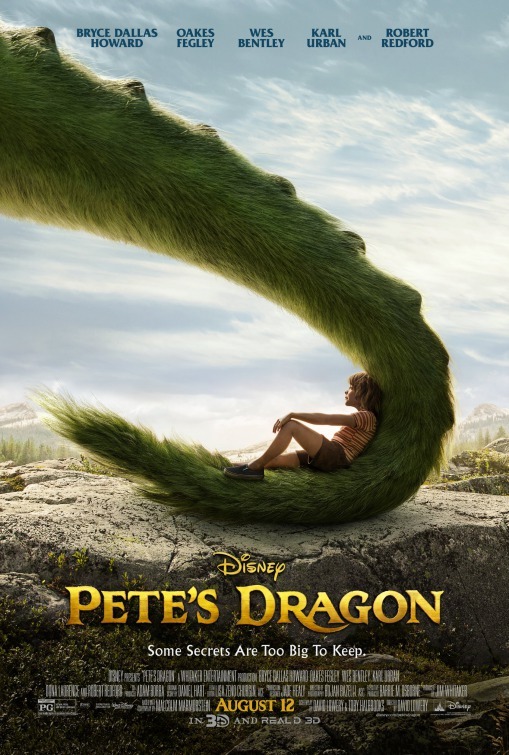
I hate the original Pete’s Dragon. When I found out a remake was being made the chances of me seeing it were slim. However, when it received several good reviews, I fit it into a four-movie day at the theater, mostly because I was curious. I didn’t expect to walk away with such a satisfied feeling. All of the awkward elements of the original (Animation that stood out in a bad way, sub par musical numbers, and Mickey Rooney) are gone, leaving a wonderful modern fairy tale about an orphaned boy and his invisible dragon friend that hit in all of the right places. Bryce Dallas Howard leads a great cast including Karl Urban, Robert Redford, and promising newcomer Oakes Fegley as Pete. A great story, seamless effects, and an ending that will bring tears to your eyes allows this movie to soar above its predecessor and claim its place on this list.
8. Lion
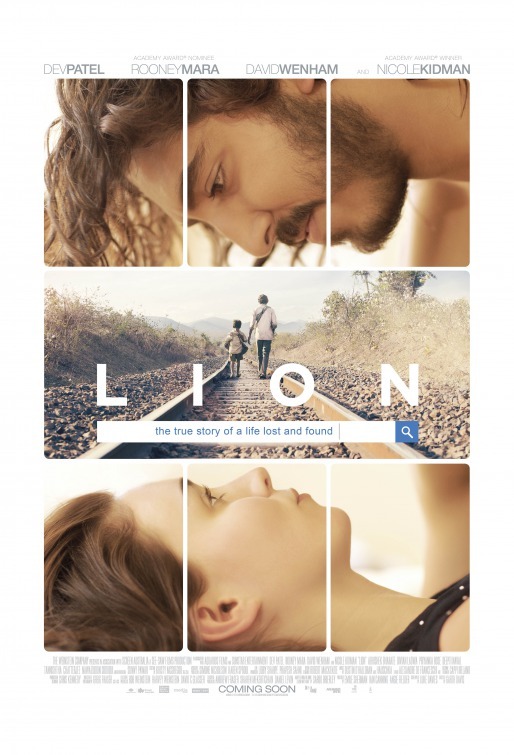
This movie snuck into theaters near the end of the year and I saw it on New Year’s Eve. It was a pretty great way to end the year. Lion is the true story of Saroo Brierley, an five-year-old Indian boy who, while searching for work with his older brother, gets transported across India to a region that is entirely alien to him, including the language. After Saroo finds his way to an orphanage, he is adopted by a loving Australian couple. 25 years later, Saroo is obsessed with finding out what happened to the family he lost. This may be the most genuine, human film made this year, as the audience feels the panic and fear of a strange new place with young Saroo, and the hope and frustration plaguing his adult counterpart as he searches one of the most populated countries in the world for a single small village. Dev Patel gives his best performance yet as Saroo in a film that will take you on quite the feels trip when both you and Saroo reach the conclusion.
7. Jackie
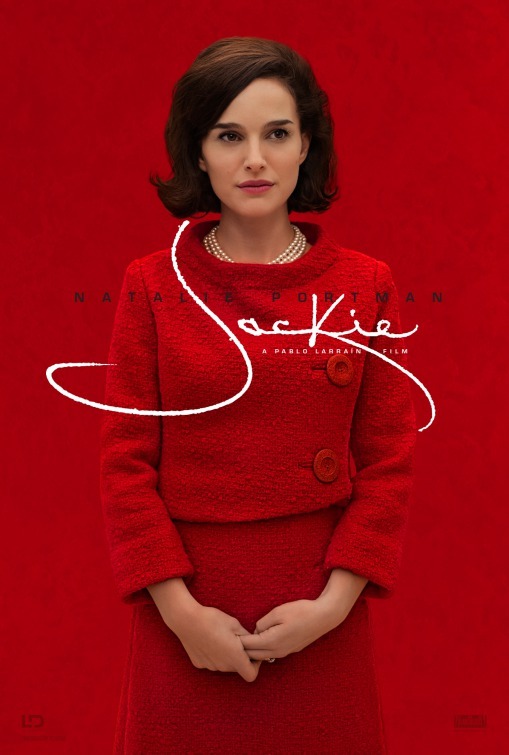
We all know what happened November 22nd, 1963. But have you ever thought about what the person most affected by that day did in the week that followed? Natalie Portman plays Jackie Kennedy, who is interviewed the week after her husband President Kennedy was assassinated. The movie rests completely on her and she doesn’t disappoint. She completely becomes Kennedy as we see a world that is rocked by loss on both a personal and national level. Kennedy must face everything that comes in the aftermath from being moved out of the White House for the Johnson family to trying to explain to her children why their father won’t come home again. There are times that I forgot I was watching Natalie Portman as I fell into the world captured so perfectly by Pablo Larraín. This film speaks not only to the humanity of Jackie Kennedy, but also to her amazing contribution to the legacy JFK left behind.
6. Arrival
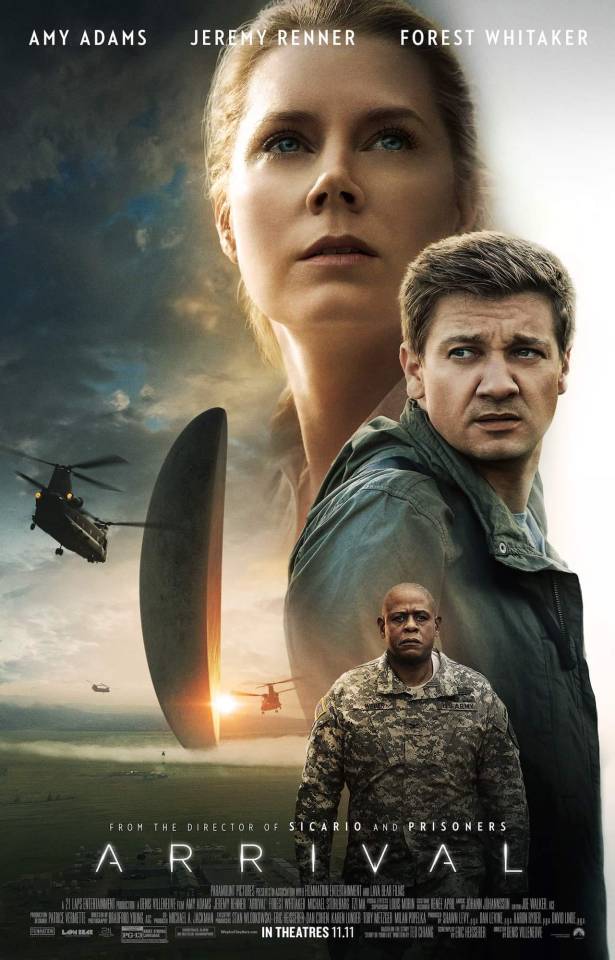
What would happen if we really were visited by alien lifeforms? A history of cheesy and often terrible movies (cough, Independence Day, cough) has built in the assumption that the aliens would be hostile and seek to destroy us. If aliens were to visit, I believe that Arrival shows us the most likely outcome compared to anything else. Amy Adams plays linguistics professor Louise Banks who is called in by the government to try to decipher the communications of alien visitors. Along with a brilliant physicist (Jeremy Renner), Banks must figure out the intentions of the visitors before other countries take hostile actions. This movie does an amazing job of displaying both our actual ignorance of other lifeforms and all of the possible directions we could take with it. In the midst of people not understanding each other, Arrival is a brilliantly made film that speaks to all people.
5. Moonlight
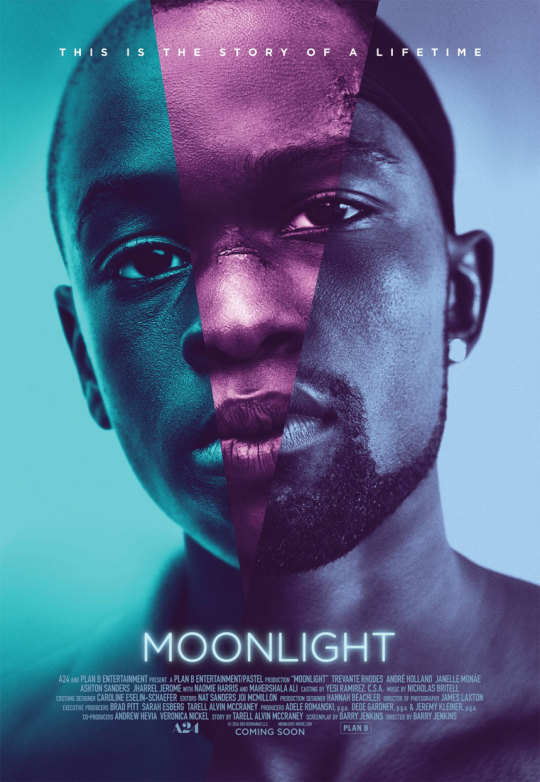
Similar in structure to Steve Jobs, Moonlight consists of three short films focusing on Chiron (aka Little), and his coming of age in a poor neighborhood that has no shortage of drug dealers. As a child, he finds a crack dealer named Juan (Mahershala Ali) who, along with his girlfriend, serve as loving parental figures in the place of his disinterested and drug-addicted mother. Juan helps Chiron trust people, which leads to him sharing an intimate moment with his high school friend Kevin. Circumstances lead to Kevin and Chiron separating but encountering each other as adults, leading to one of the most beautiful ending scenes of the year. Alex Hibbert, Ashton Sanders, and Trevante Rhodes give stellar performances as each stage of Chiron’s life. Such a simple story gives way to profound emotions that will resonate with you well after the film is over.
4. Loving
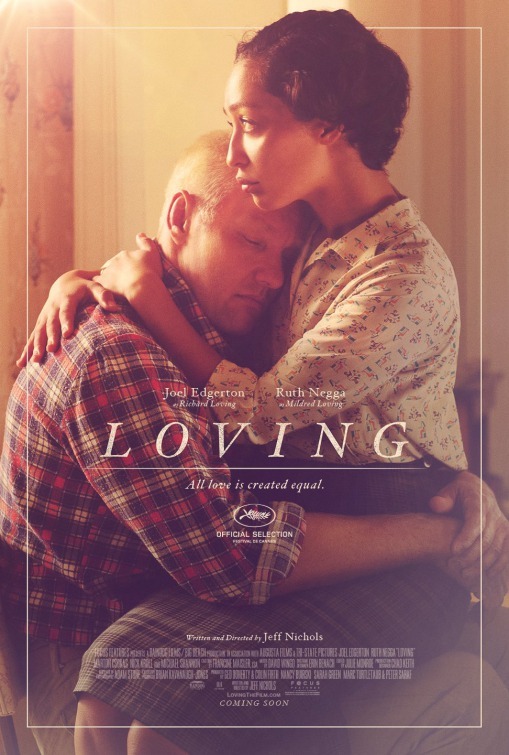
Speaking of simple, there was probably no more simply put-together movie this year than Loving. And yet, it managed to be one of the most profound films of the year. Joel Edgerton and Ruth Negga play Richard and Mildred Loving, a couple whose illegal interracial marriage led to the Loving v. Virginia Supreme Court case that ruled all marriage laws having to do with race unconstitutional. But that is not what the movie is really about. With limited dialogue and politics, Loving focuses almost solely on the relationship of the two main characters and the hardship they have to face from their home state. We learn about their dreams and the lengths they will go to in order to be together. The leads are absolutely fantastic and give you the entire weight of the story while spending only a few minutes of screen time in courtrooms. In a year where several films on this list took my heart, Loving is a true standout.
3. Zootopia
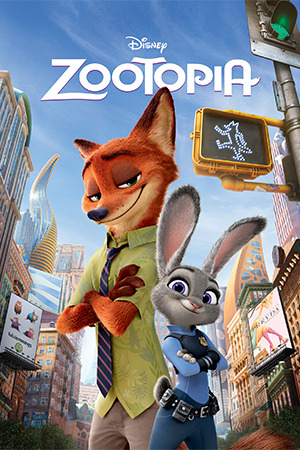
The reason that The Good Dinosaur didn’t succeed as much as everyone thought it would was because it failed to deliver on its premise of a world full of dinosaurs by showing us just a few dinosaurs. Zootopia doesn’t suffer from this problem, as the world of Judy Hopps (Gennifer Goodwin) and Nick Wilde (Jason Bateman) is a rich world of animals with different personalities, troubles, and ambitions. This movie would have succeeded as a fun movie on that alone. But Zootopia goes a step further and delivers one of the most profound messages of almost any animated film ever made. It not only highlights the obvious prejudices different groups of people feel toward each other, but also how we may not even be aware of our own unwarranted feelings of distrust and how they can affect people close to us. This was the movie that 2016 needed and that we’ll need for years to come. Also, who wants a full Gazelle album? (Raises hand)
2. La La Land
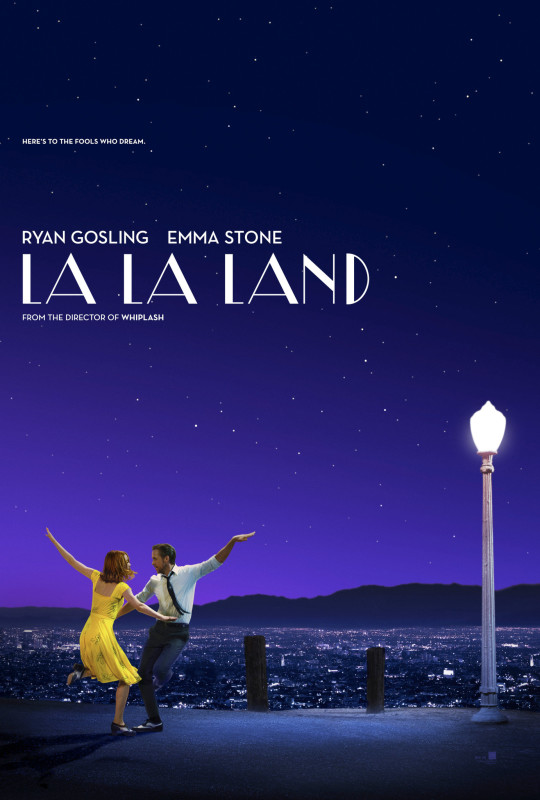
Earlier this year, when introducing one of my friends to my favorite movie, Singin’ in the Rain, I made the comment that “they don’t make this kind of movie anymore, and it’s sad.” Well, turns out that Damien Chazelle felt the same way and gave us an amazing film that serves as both an homage to the musical genre that preceded it and as a beautiful piece of art that will inspire future artists for years. Emma Stone plays Mia, a girl trying to pursue her acting dreams in LA, along with thousands of other people. She frequently runs into Sebastian (Ryan Gosling), an unemployed jazz musician who dreams of owning his own club. The two chase their dreams together to the tune of the best soundtrack of the year and delightful dance numbers and city backdrops. La La Land succeeds in every technical aspect as Los Angeles is turned into a magical, musical dreamland. Stone and Gosling go beyond their usual charm and give us amazing characters with surprisingly good singing voices that would make Fred Astaire and Ginger Rogers proud. And then the ending. Well, if the ending sequence doesn’t fill you with emotion, then you’re probably a robot.
1. Hell or High Water
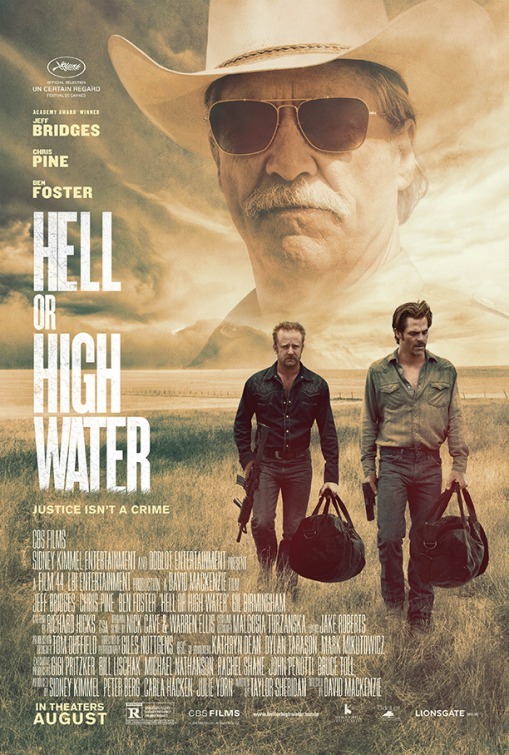
The biggest surprise of the year for me turned out to be my favorite movie of 2016. Hell or High Water is David Mackenzie’s neo-Western masterpiece that is perhaps the best possible step to take after the Cohen Brothers’ No Country for Old Men. The film shows Chris Pine and Ben Foster playing brothers Toby and Tanner Howard. When their mother dies and Tanner gets out of jail, the bank handling the loan for their mother’s farm seeks to seize the property. In order to pay off the bank that overcharged their mother for years, the brothers begin to pull off small robberies of the local branches. While authorities don’t see it as a priority, the crimes attract the attention of two Texas Rangers (Jeff Bridges and Gil Birmingham) and a chase across Texas begins. Every performance is incredible in this movie. Chris Pine shows his dramatic chops while giving the best performance of his career (so far) and Jeff Bridges is outstanding beyond even what you would expect. The cinematography shows off the gritty yet beautiful western landscapes yet never loses the scope of how the region has been hit by the advancement of modern times. But the true winner here is the best screenplay of the year as every character is able to draw you into a story that begs questions of morality and loyalty. While La La Land may walk away with all of the awards, Hell or High Water is my pick for Best Film of 2016.
0 notes